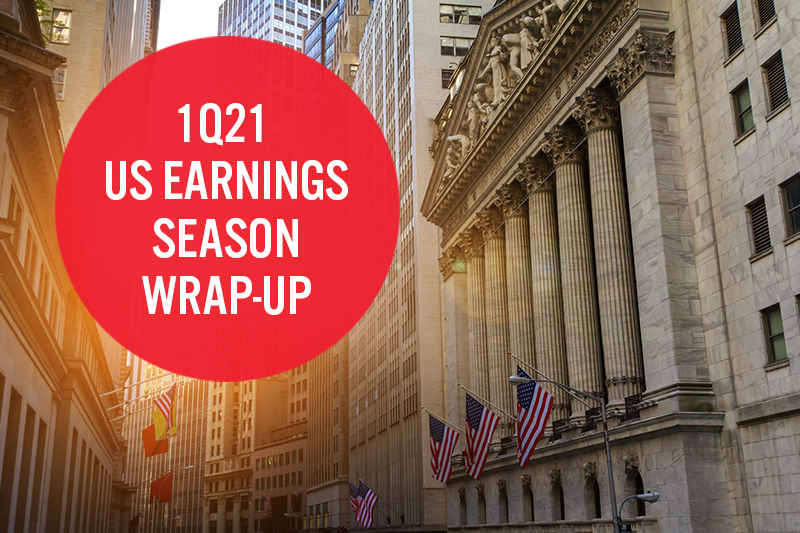Introduction
Our first-quarter 2021 (1Q21) wrap-up covers the quarterly earnings of 58 (mostly) US-based retailers, brands, e-commerce platforms and REITs in the
Coresight 100.
- About 89% of companies beat revenue consensus estimates, 9% missed revenue consensus estimates and 2% reported revenues in line with consensus.
- Apparel specialists, online apparel retailers, department stores, drugstores, e-commerce companies, electronics retailers, food and grocery retailers, home and home-improvement retailers, luxury companies and mass merchandisers enjoyed a stronger quarter (versus expectations): All covered companies beat consensus revenue estimates. Furthermore, over 65% of covered companies in these sectors beat consensus EPS estimates.
- Beauty brands and retailers were the worst-performing sector (versus expectations) in the quarter, with 50% of covered companies missing consensus revenue estimates.
However, beating or meeting consensus does not necessarily indicate positive results, as retailers navigate
the Covid-19 crisis. The pace of sales recovery is a much better indicator of the health of retailers than benchmarking versus consensus.
Company results in 1Q21, which ended April 30 for most companies in our coverage, include key commentary and qualitative insights from major US retailers and brand owners on their recent performance, in terms of revenues and comps, and the impact of the coronavirus pandemic. Although we term the period under review 1Q21, some companies in this report describe their latest quarter differently; some also have different quarter-end dates.
In February 2021, US retail sales saw strong growth of 7.2% year over year. Consumers continued to purchase goods rather than services, but pulled back spending in a month that saw no stimulus checks and a nearly nationwide winter storm keep millions inside for almost a week. In March, US retail sales growth accelerated to 19.4%. Growth was inflated by low sales numbers in March 2020, when the Covid-19 pandemic first hit the US. However, even comparing sales to March 2019 paints a picture of strong sales growth in March 2021, with a two-year increase of 27.1%—up from the 15.8% two-year increase in February 2021. April’s year-over-year growth set a new high for retail sales growth since the start of the Covid-19 pandemic, in large part because of the very weak comparatives in April 2020, when the pandemic caused nationwide lockdowns and store closures in the US, resulting in a 4.9% year-over-year decline in retail sales that month. Comparing to 2019 values, April sales still grew by a very strong 24.2%.
In May, total US retail sales grew by a very strong 17.4% year over year and by 19.6% when compared to 2019 values.
Below, we assess the recent performance of retailers, brand owners, e-commerce platforms and REITS in detail.
Apparel and Footwear Brand Owners
Apparel and footwear brand owners reported a mixed recovery: On a two-year basis (versus the corresponding quarter in 2019), NIKE, Under Armour and VF Corporation reported positive sales growth, while Guess?, Hanesbrands, Levi Strauss, PVH Corp. and Ralph Lauren witnessed declines in sales.
Going forward, these brand owners will continue to expand their digital channels and drive category expansion—including a greater focus on casual and athletic wear, outdoor clothing and innerwear.
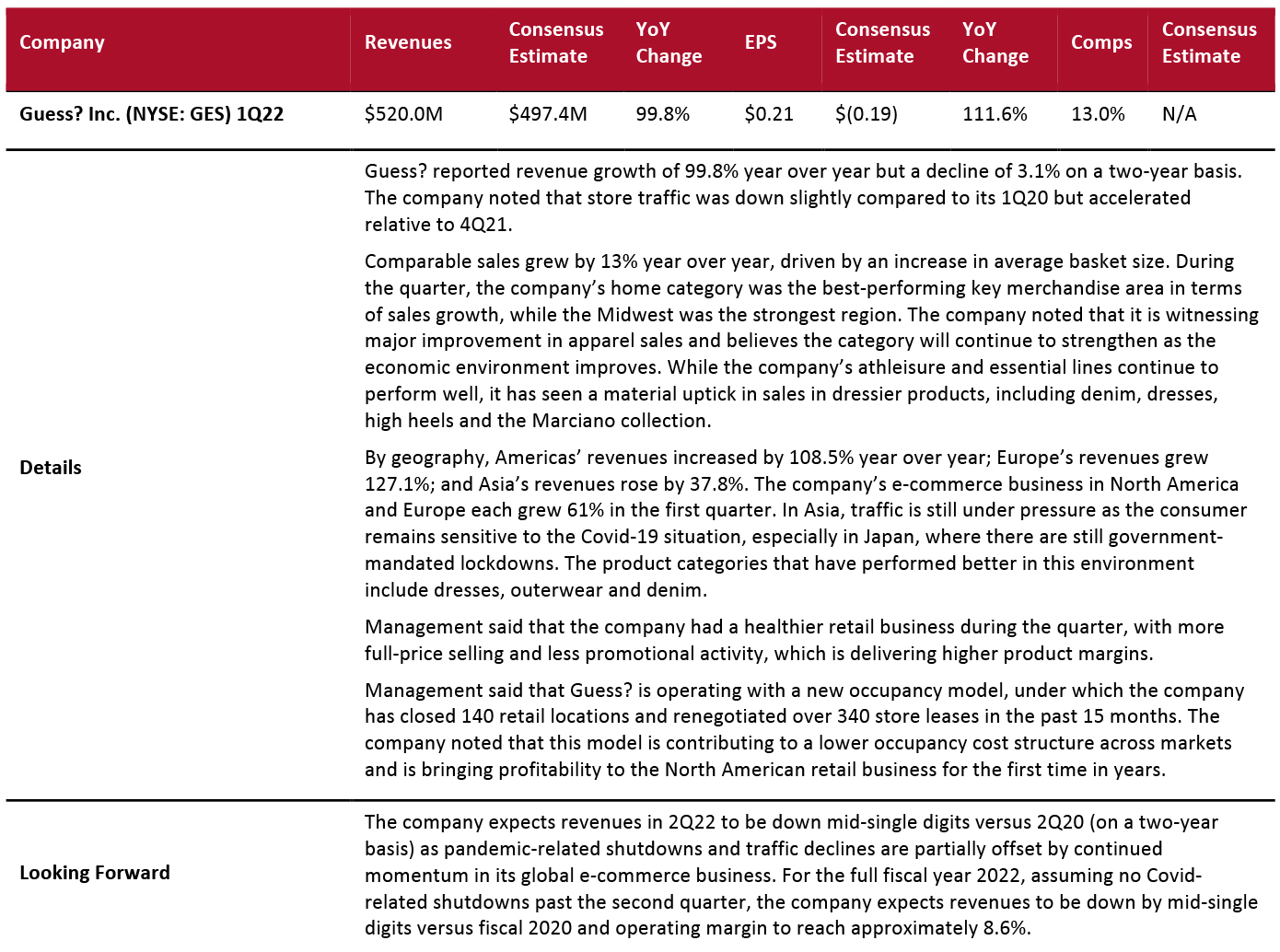
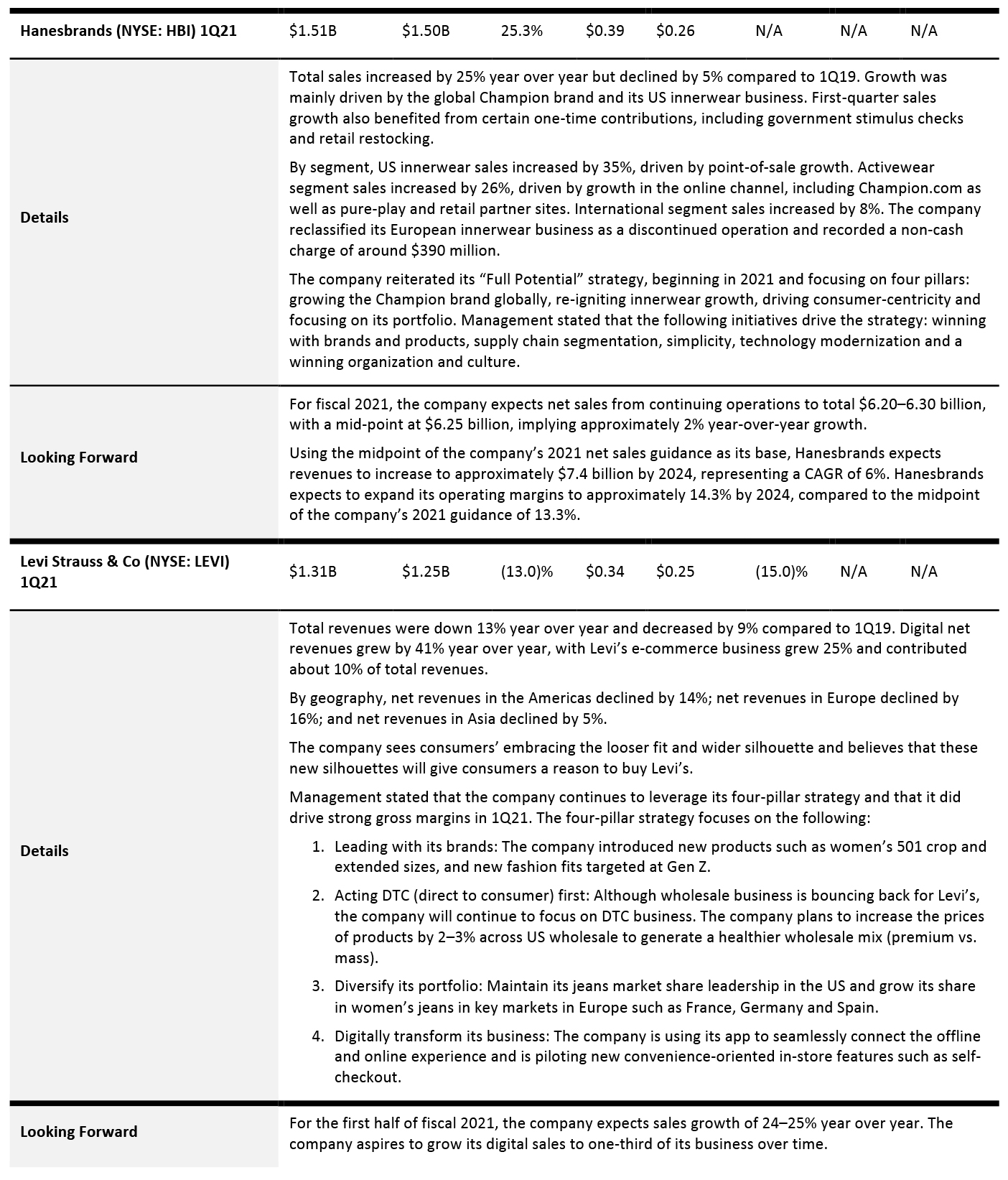
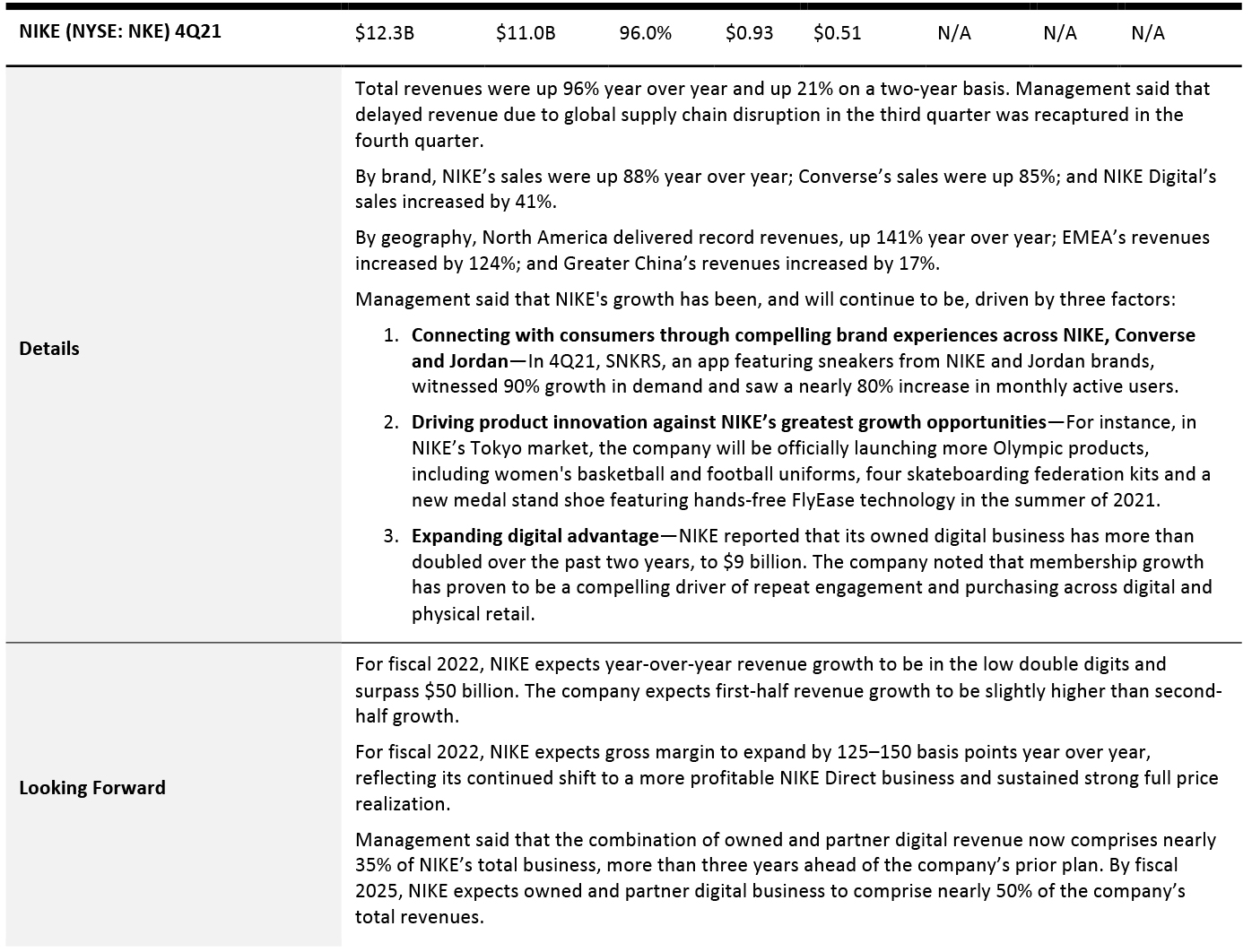

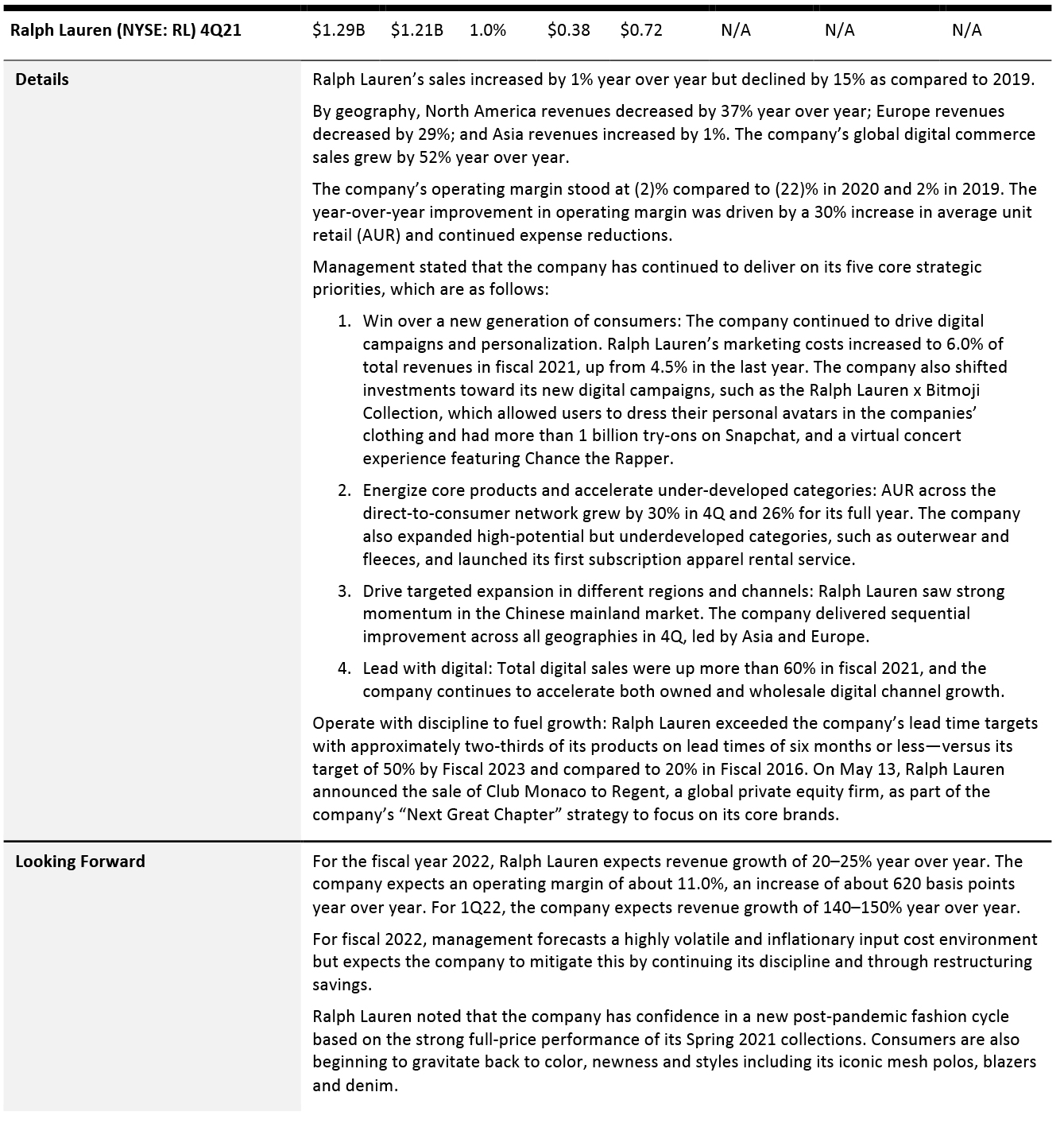
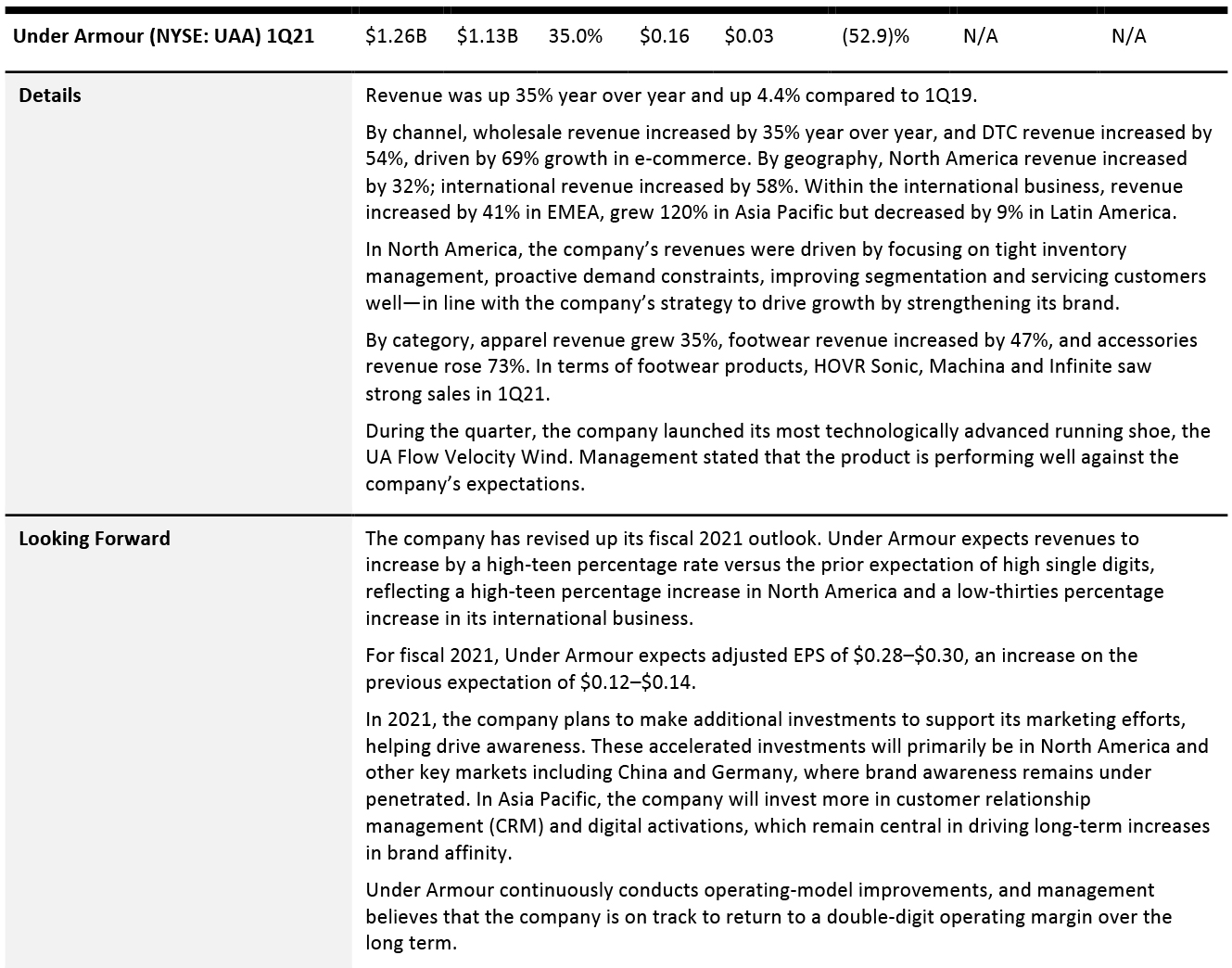
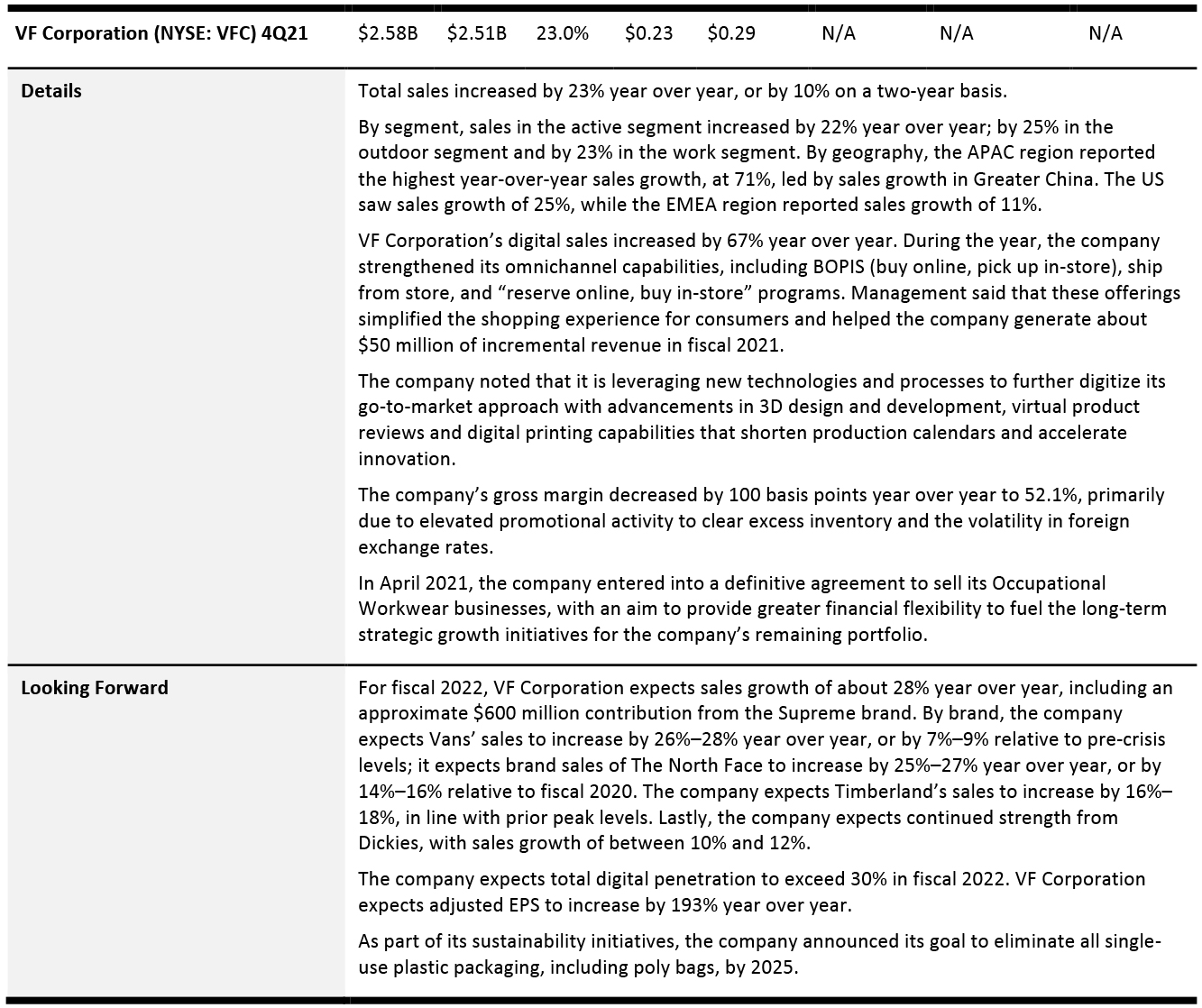
Apparel Specialty Retailers
Apparel specialists witnessed a substantial recovery, with American Eagle Outfitters, Dick’s Sporting Goods, Foot Locker, Gap, L Brands, Lululemon and Urban Outfitters reporting strong positive sales growth on a two-year basis.
While athleisure, casualwear and intimates remained strong catalysts for these retailers, they are also witnessing a rebound in demand for dresswear as consumers are emerging from the crisis and returning to socializing.
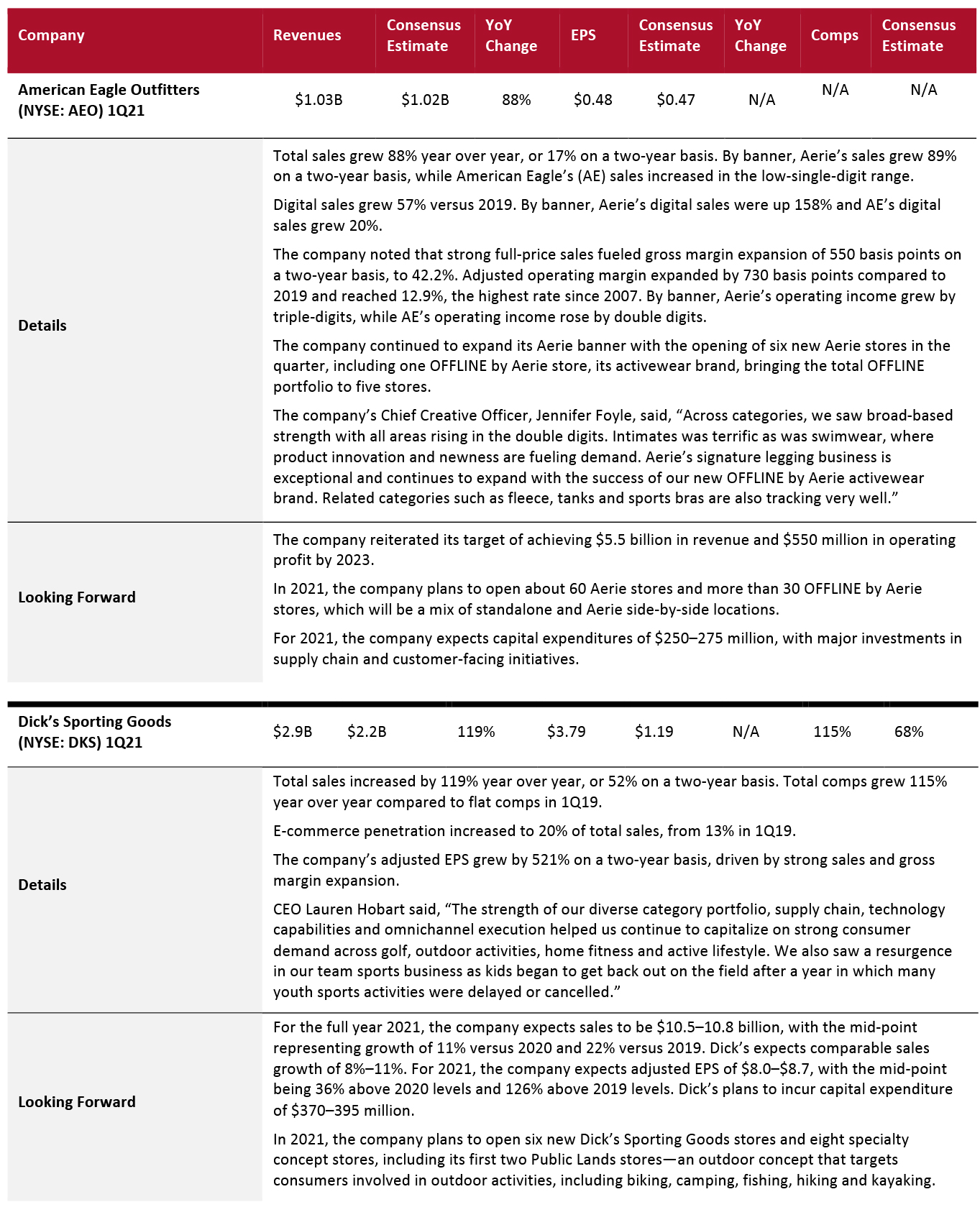

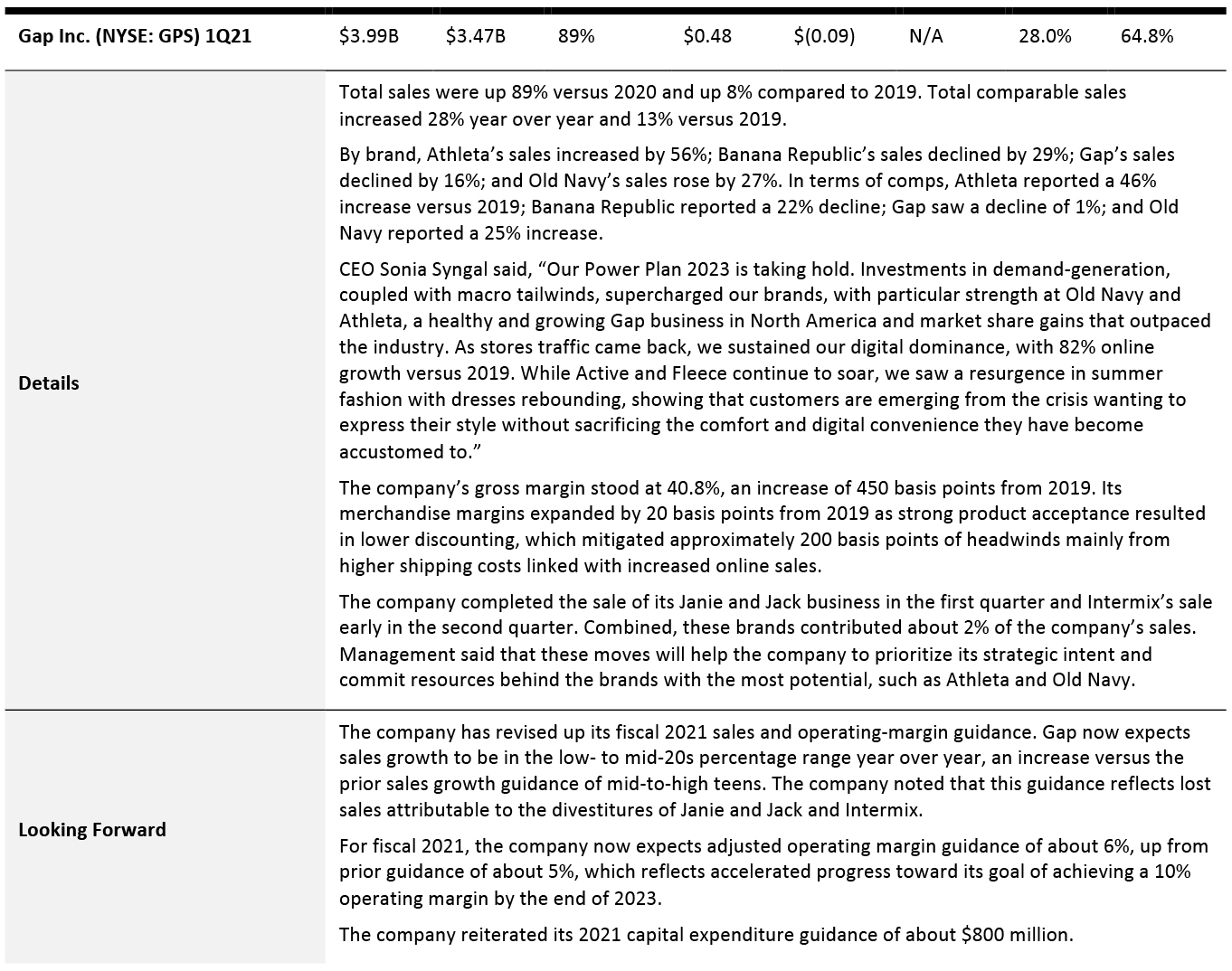
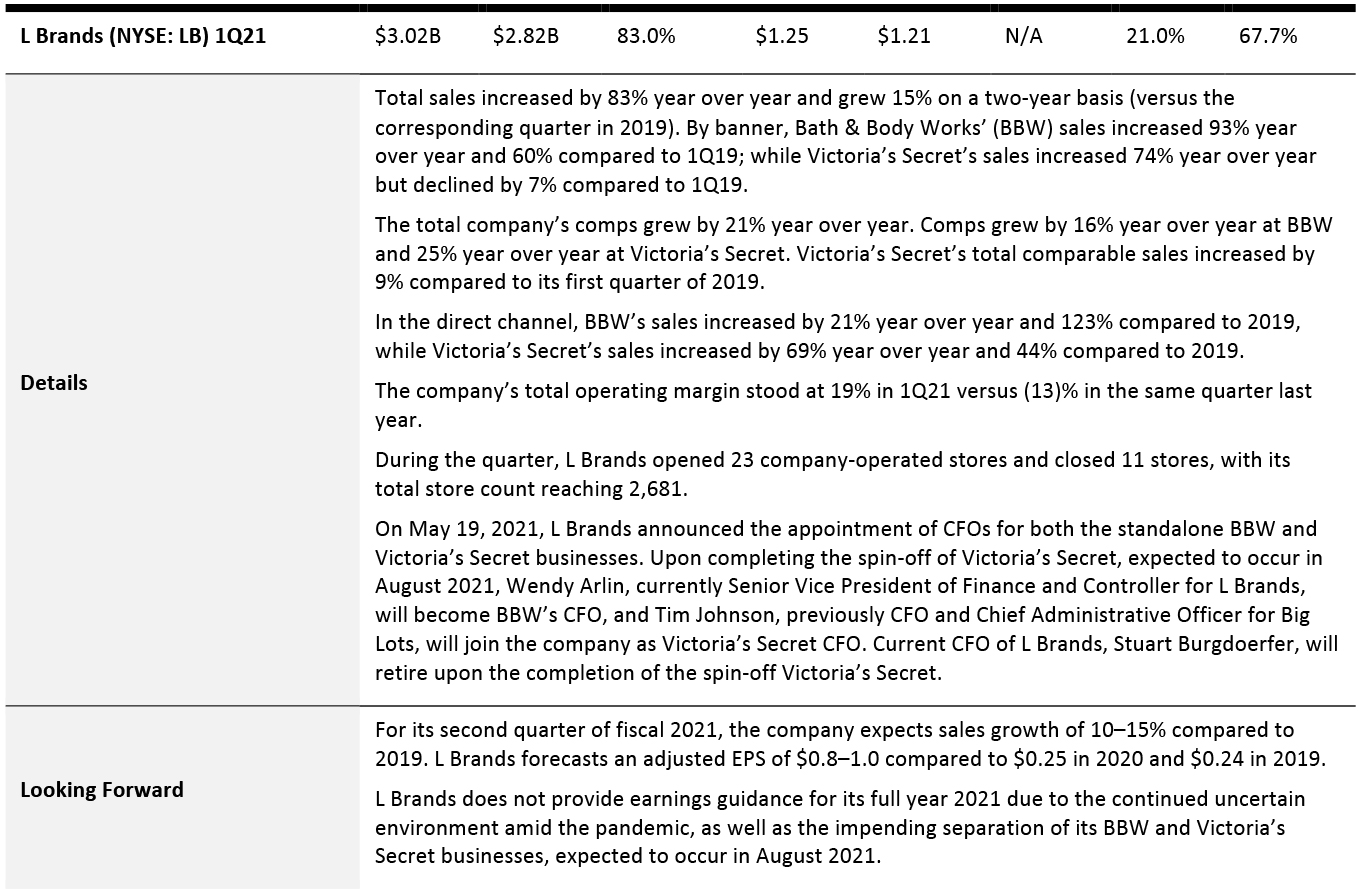
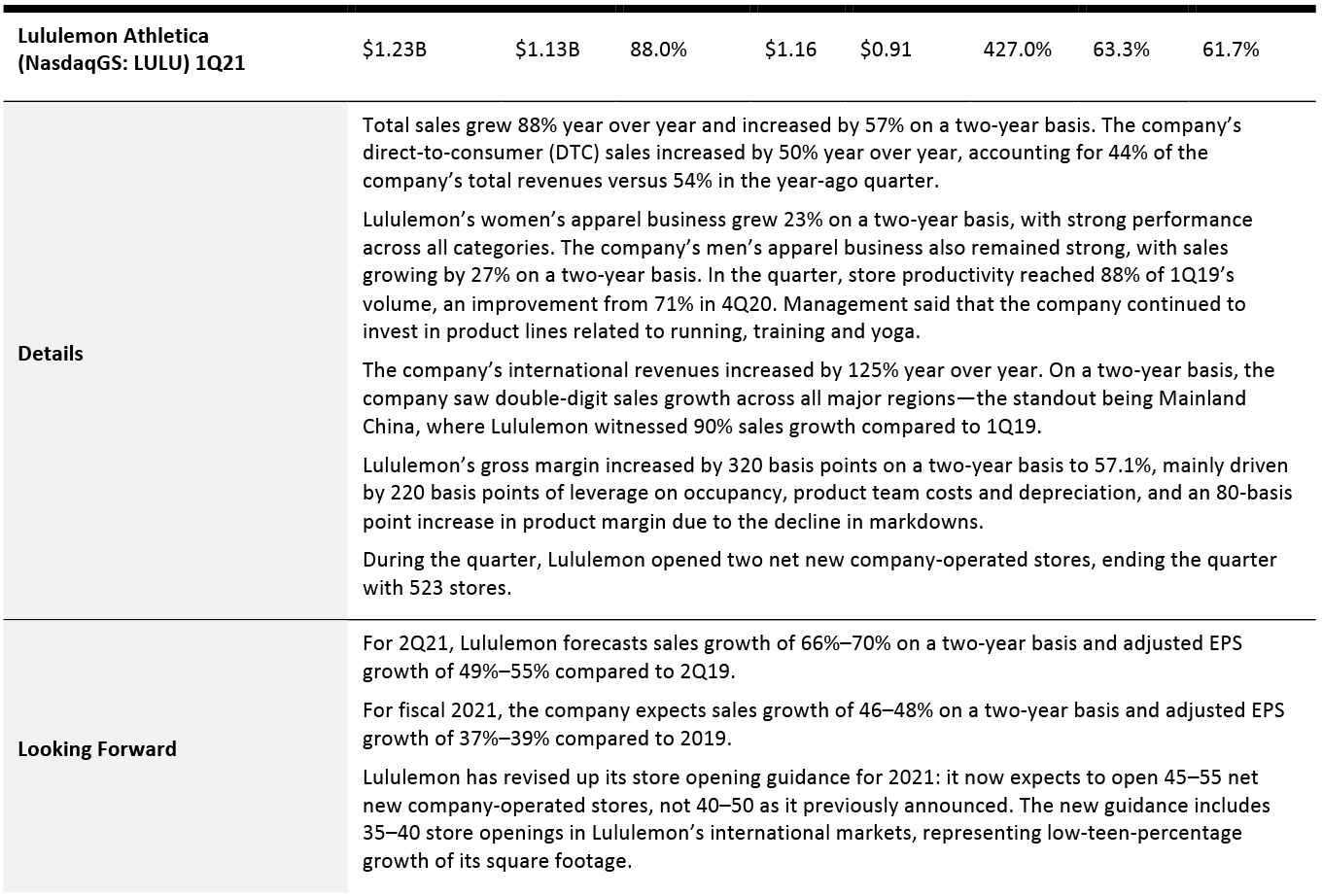
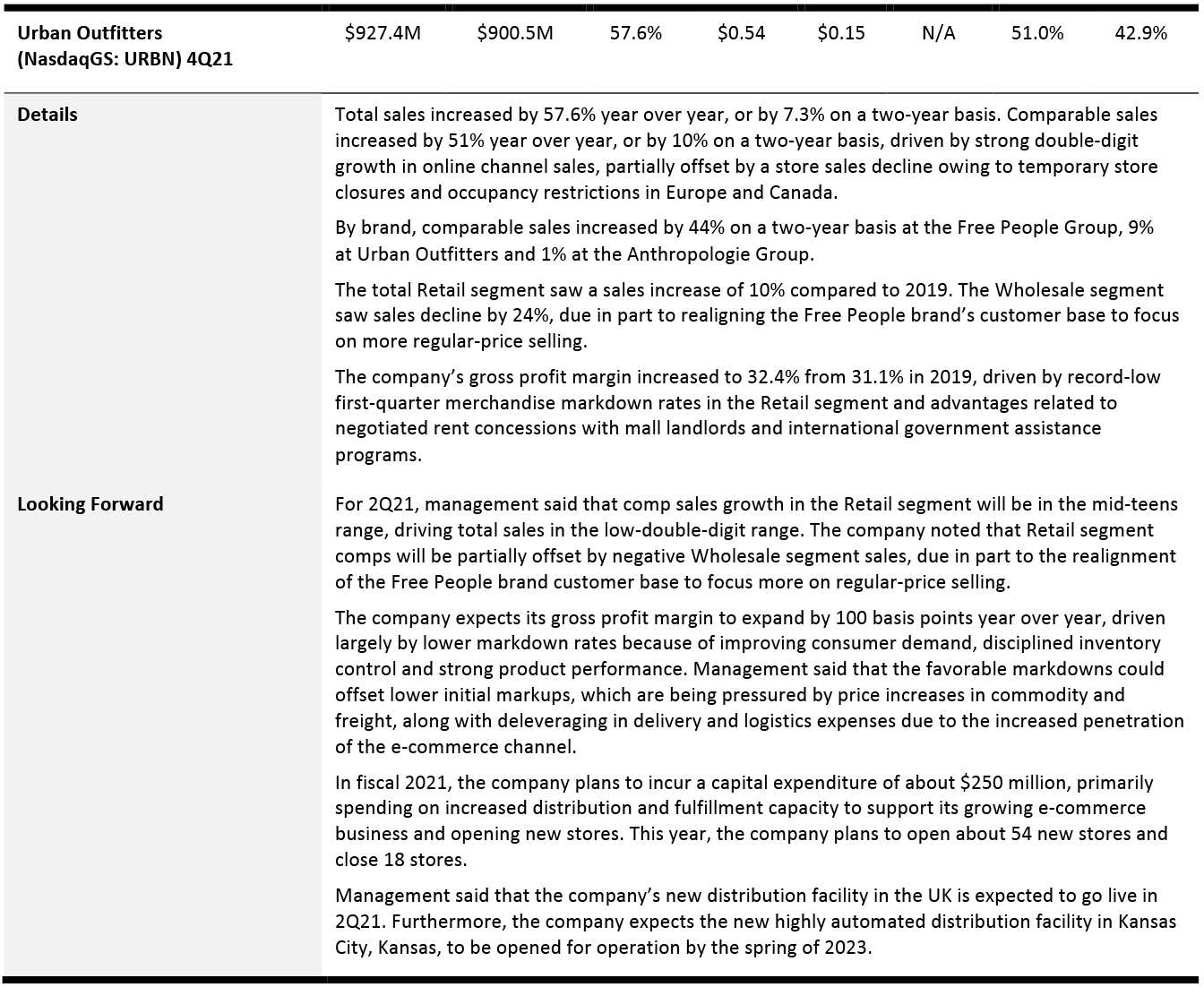
Off-Price Retailers
Off-price retailers witnessed a strong quarter, with covered companies posting high single-digit to double-digit sales growth on a two-year basis. While the home category continues to outperform at these retailers, they also are seeing strong trends in apparel categories, as consumers begin to resume social activities and refresh their wardrobes.
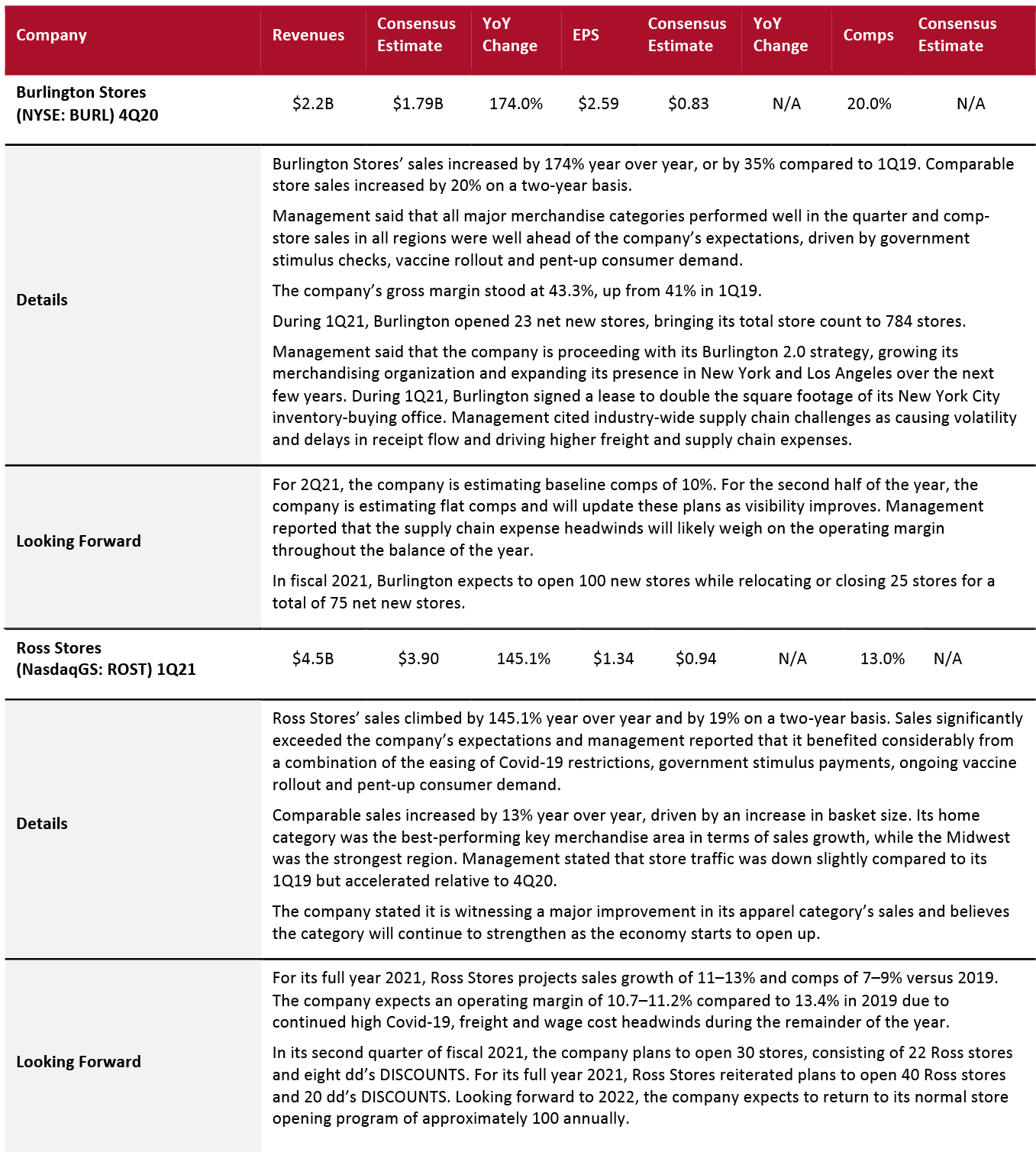
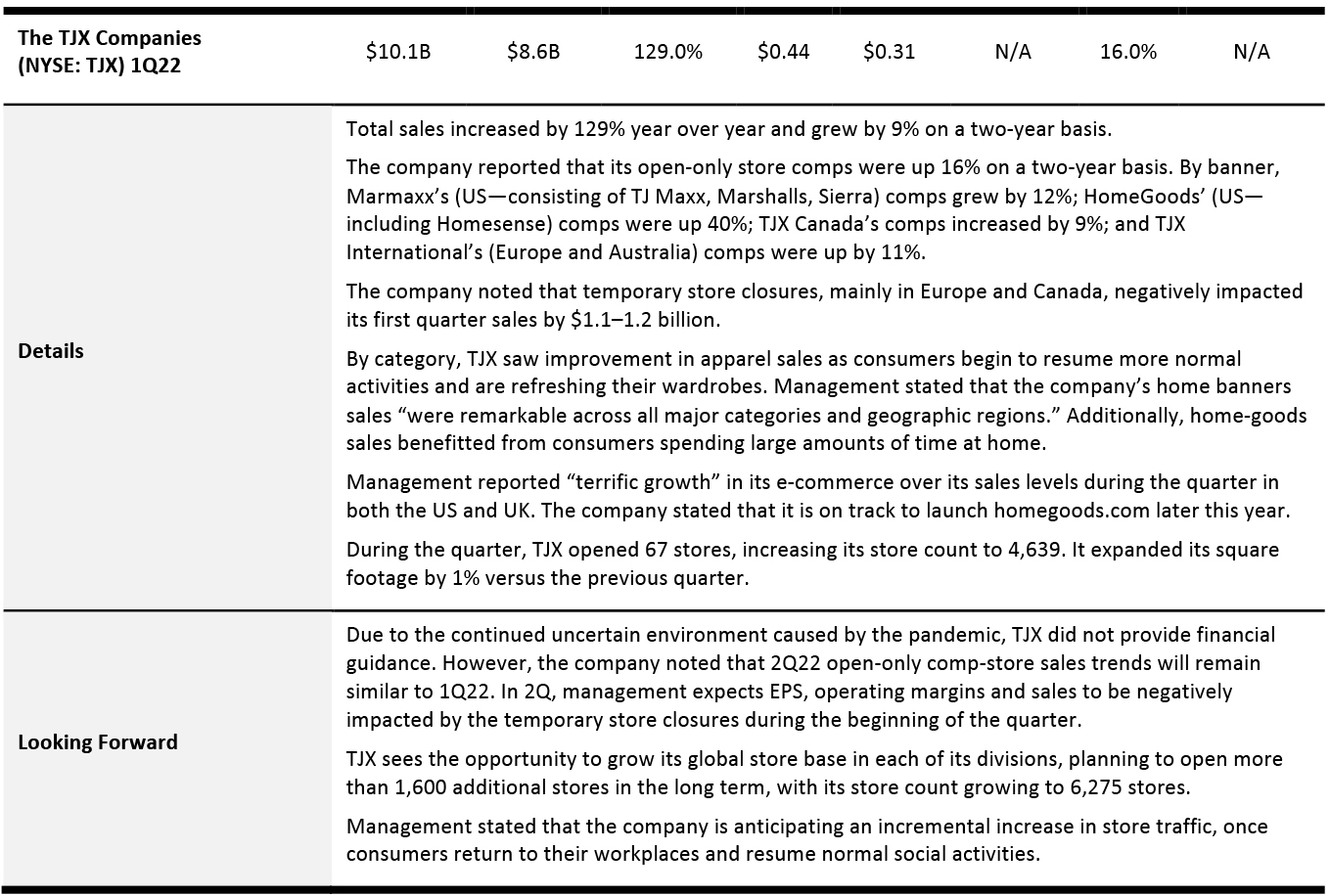
Online Apparel Retailers
Stitch Fix reported double-digit sales growth on a two-year basis in the quarter, driven by a very strong increase in its active client base. For fiscal 2021, Stitch Fix forecasts sales growth of more than 20% year over year and adjusted operating margin expansion.

Beauty Brands and Retailers
The beauty category continues to see a strong recovery, with Ulta Beauty posting a double-digit increase in sales on a two-year basis, and Estée Lauder and L’Oréal witnessing low single-digit positive sales growth compared to the corresponding quarter in 2019. On the other hand, Coty reported a double-digit decline in sales on a two-year basis.
Among the beauty categories, skin care, bath, fragrance and hair care are trending, while demand for makeup remains weak.
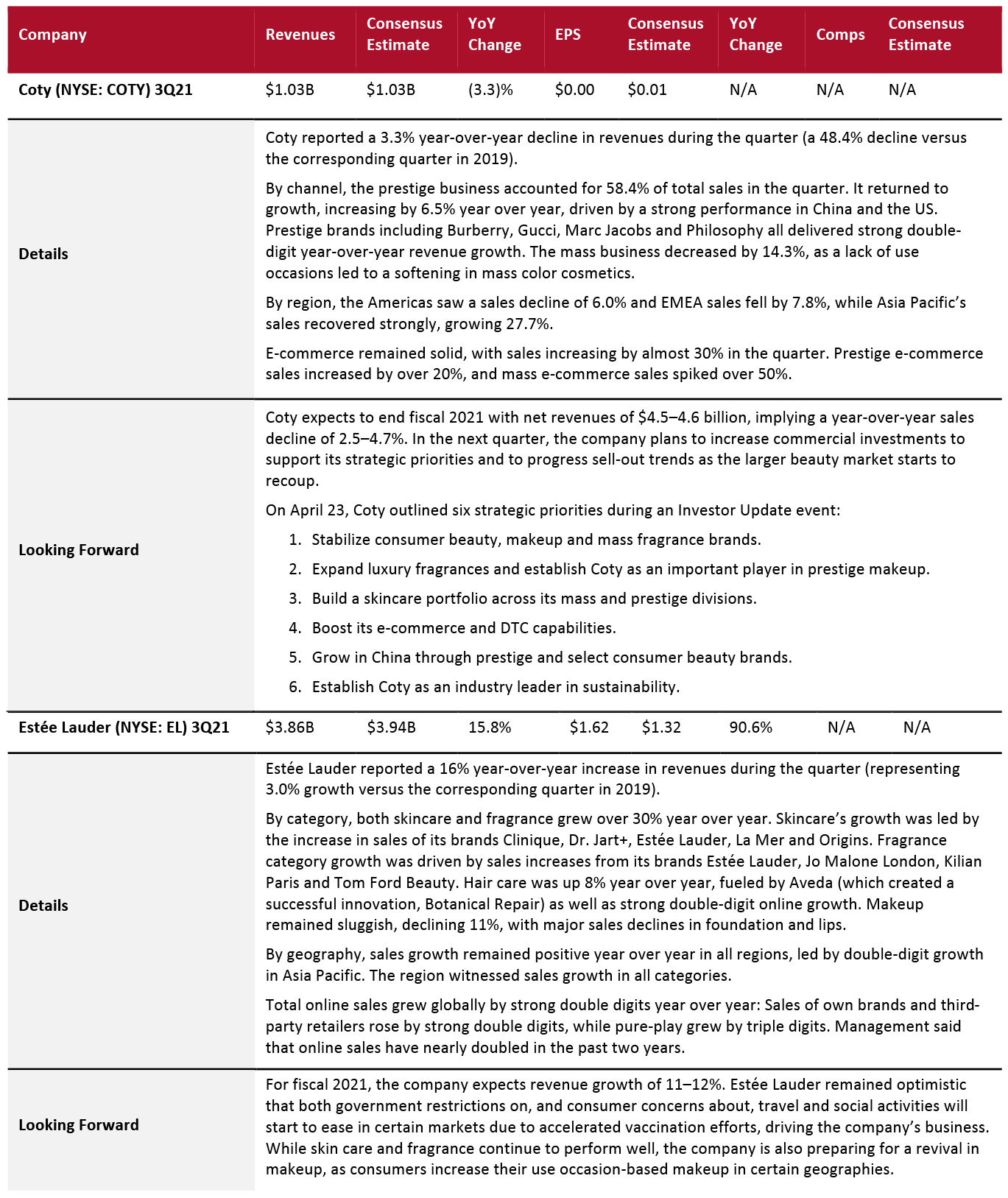
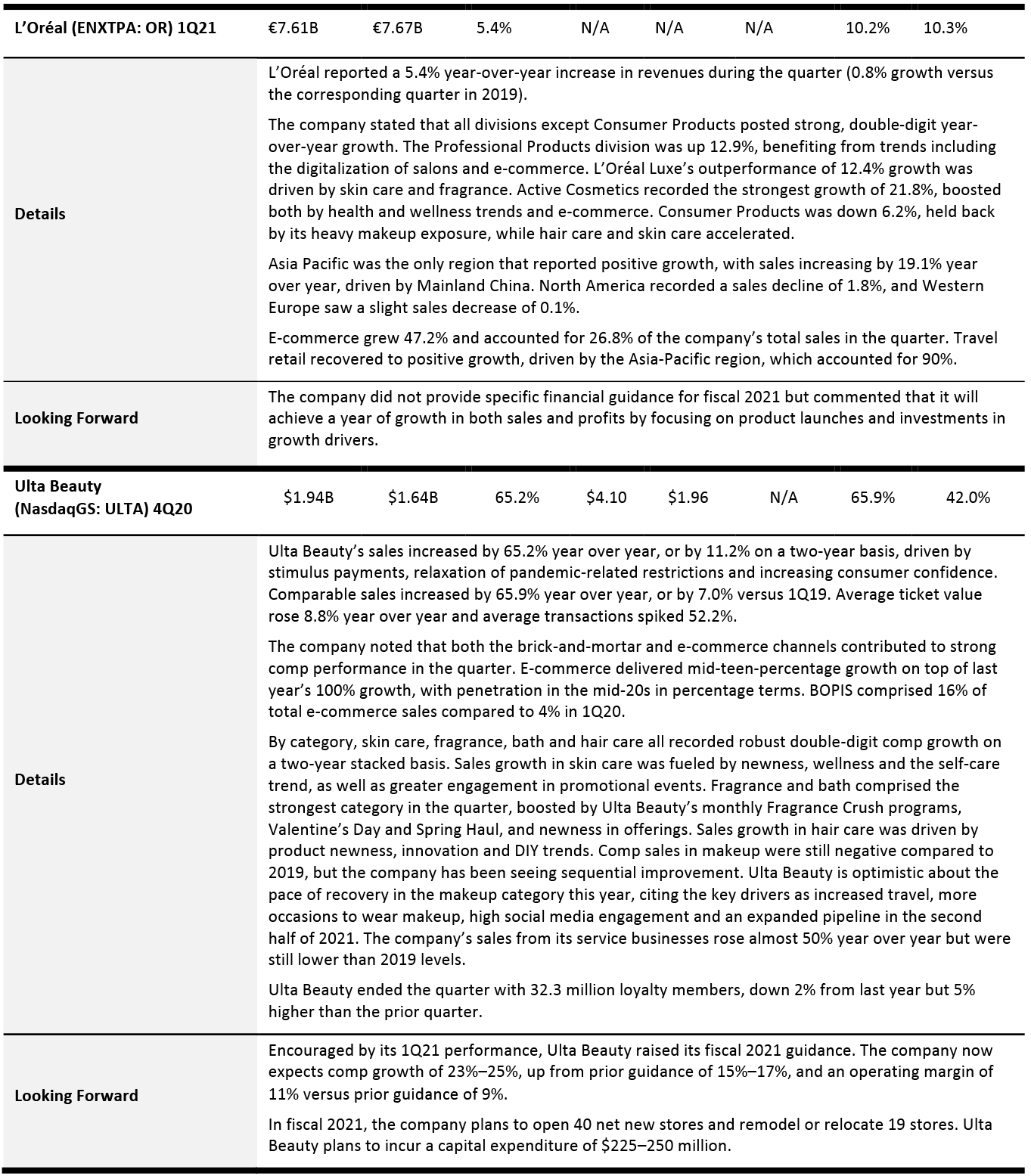
Department Stores
Department stores are seeing weak recoveries from the crisis, with Macy’s and Nordstrom reporting double-digit declines in sales on a two-year basis, while Kohl’s posted a mid-single-digit sales decline compared to the corresponding quarter in 2019.
However, these department stores are seeing strong trends in various apparel and footwear categories, such as activewear, denim, dresses, intimates and shorts. Kohl’s expects a more normal back-to-school season this year and is well positioned with its inventory.
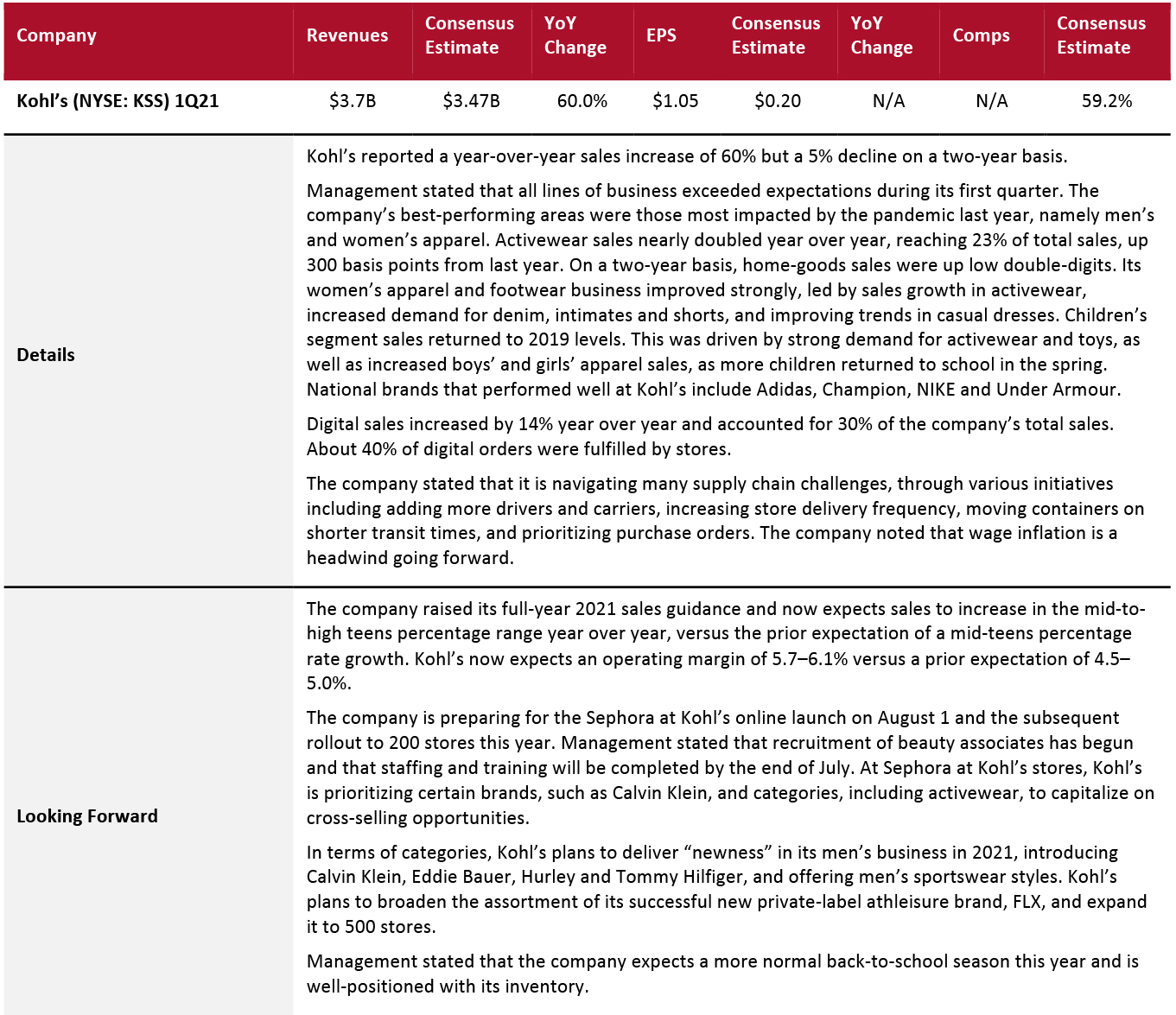

E-Commerce Platforms
E-commerce players continued to benefit from the Covid-19 crisis, with Alibaba, Amazon, eBay and JD.com reporting strong sales growth on a two-year basis. For the next quarter, Alibaba, Amazon and eBay expect year-over-year sales growth to exceed 20%.
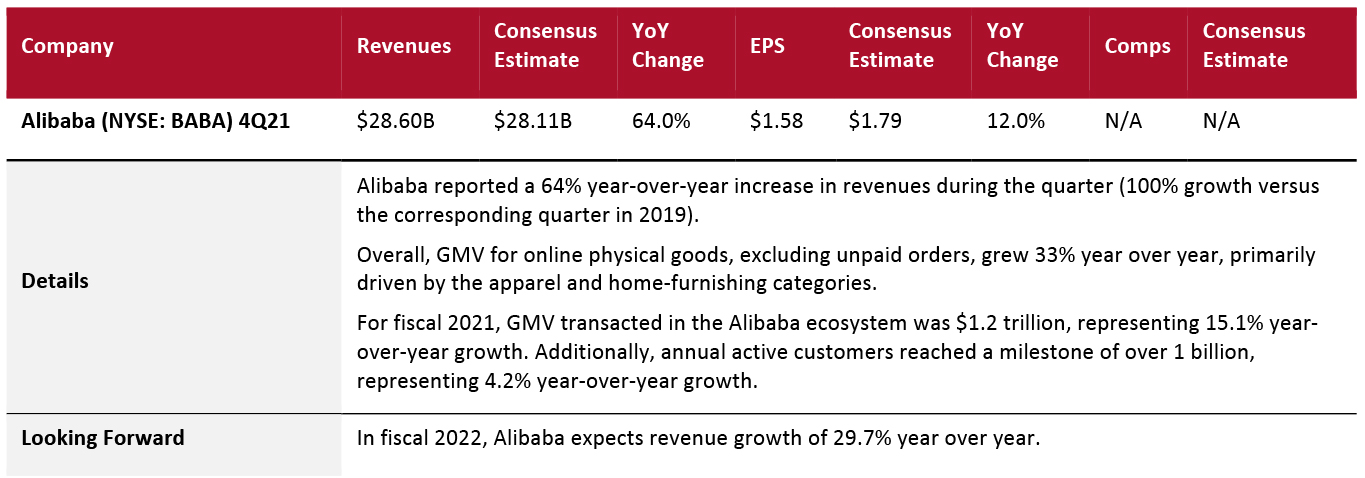
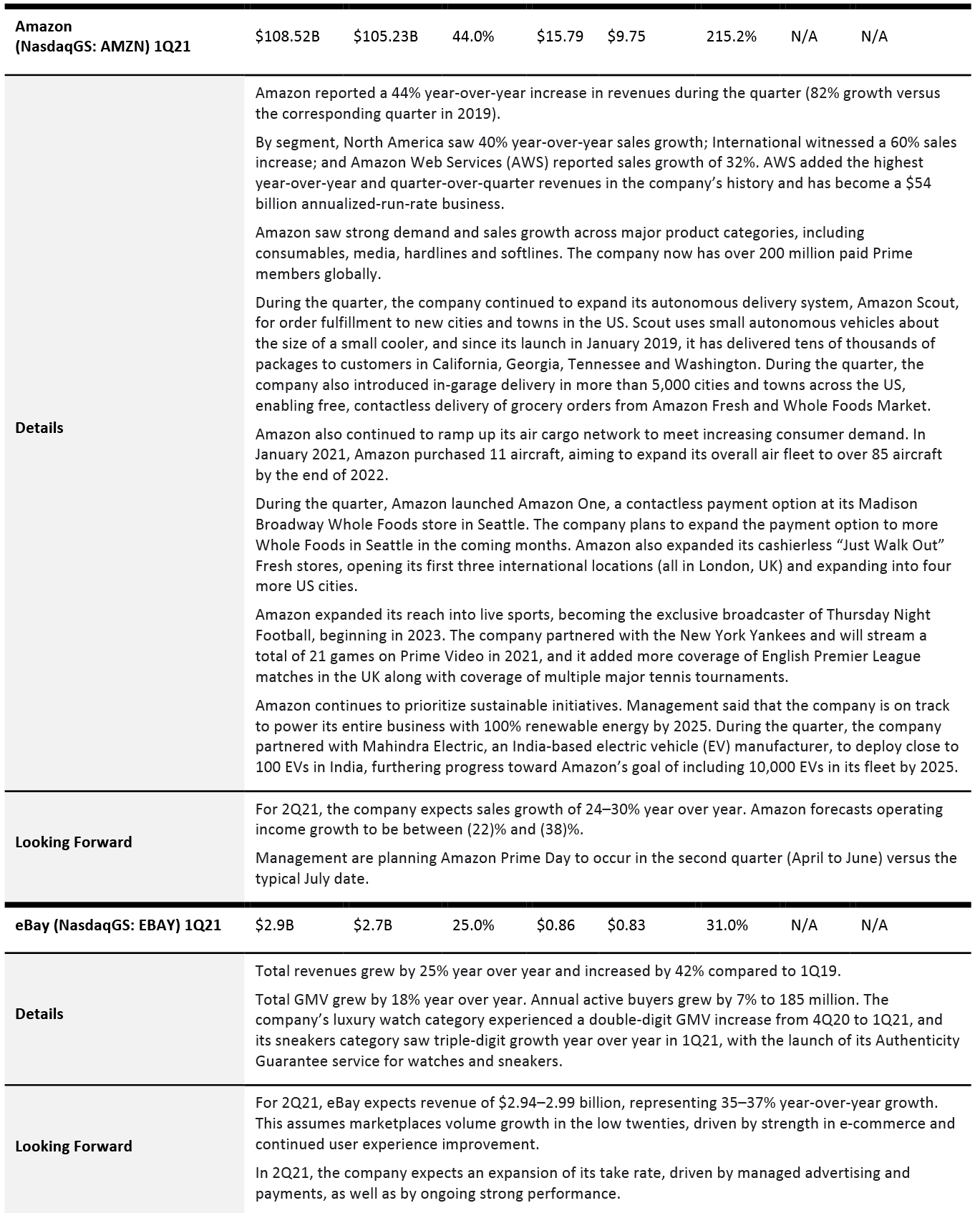

Electronics Retailers
Best Buy reported double-digit comps year over year in its latest quarter, with its appliances, computing and home theater categories making the biggest contributions. The company forecasts year-over-year comp growth of about 17% in its next quarter.
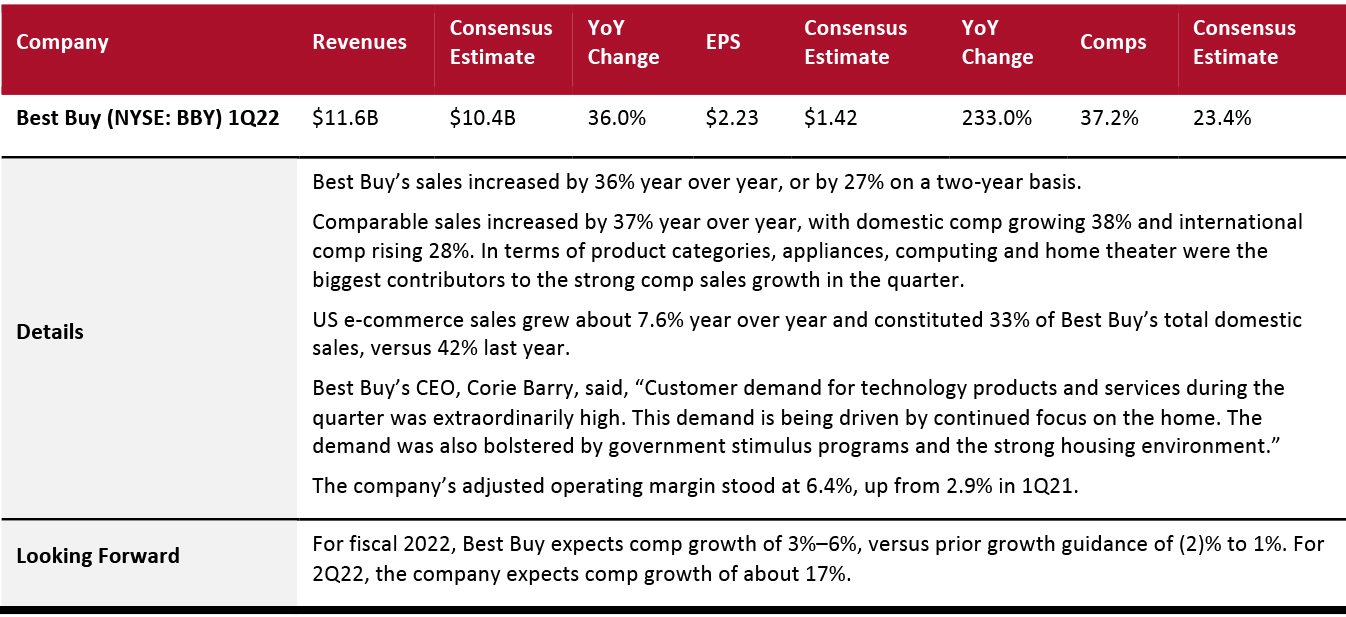
Food, Drug and Mass Retailers: Discount Stores
Discount stores continued their solid run in the quarter, attracting a broad base of budget-conscious customers. Big Lots, Dollar General, Dollar Tree, Five Below and Ollie’s Bargain Outlets noted strong discretionary momentum driven by seasonal and home products. Unlike most retailers, which are shrinking their physical footprints, discounters’ real estate plans remain firmly in place, including new store expansions.
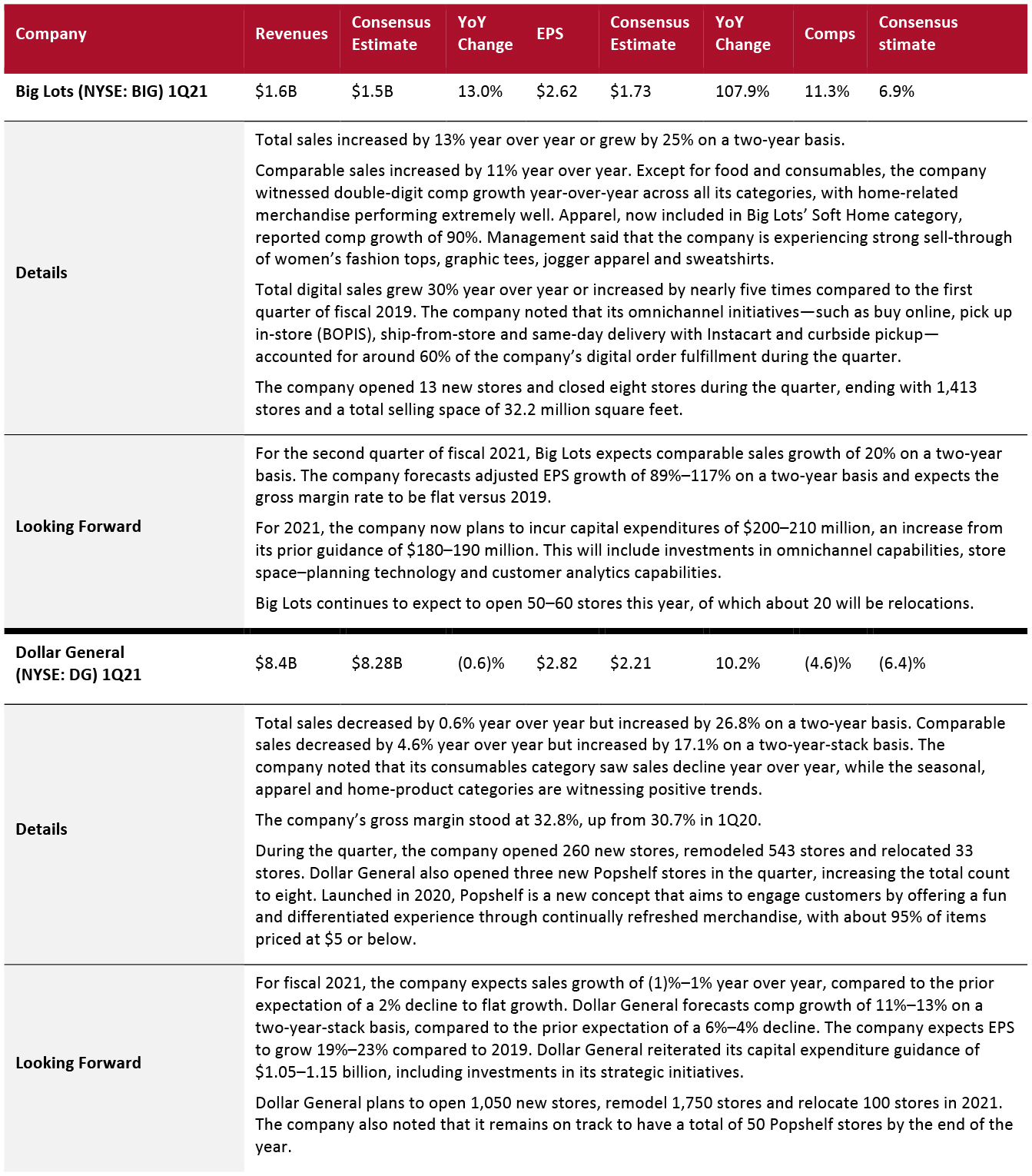

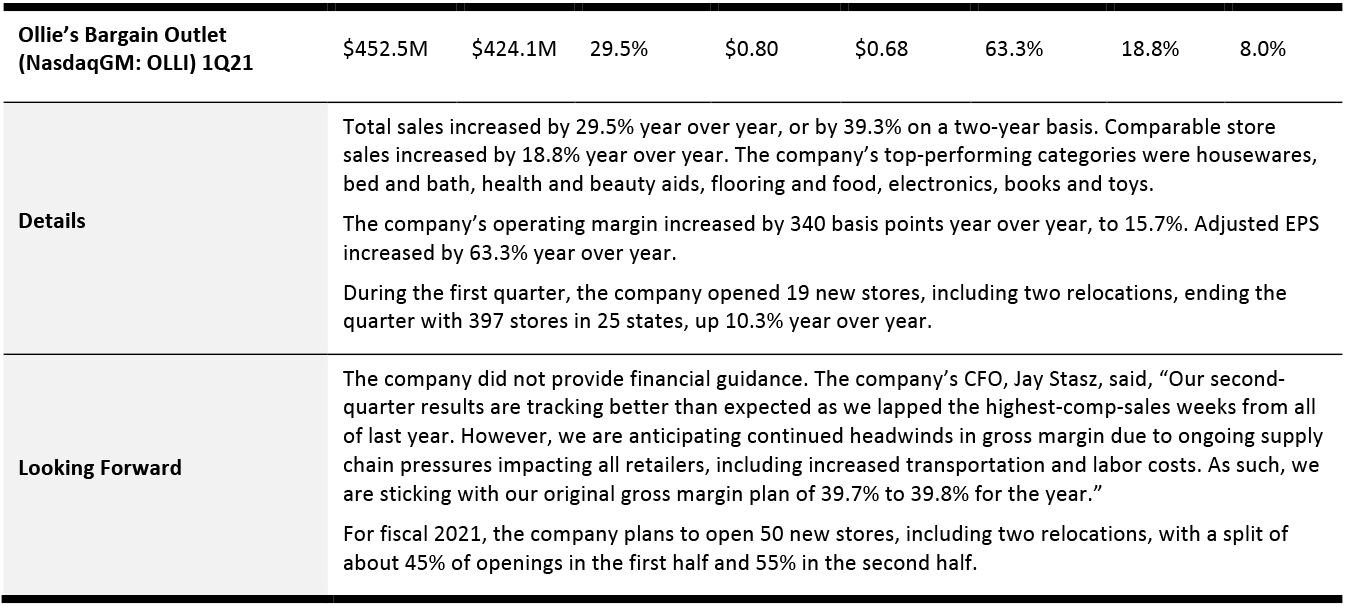
Food, Drug and Mass Retailers: Drugstores
CVS Health’s sales growth accelerated in its latest quarter, driven by increased prescription volumes and membership growth. CVS maintained its aggressive push into healthcare offerings by converting some of its stores into healthcare destinations.
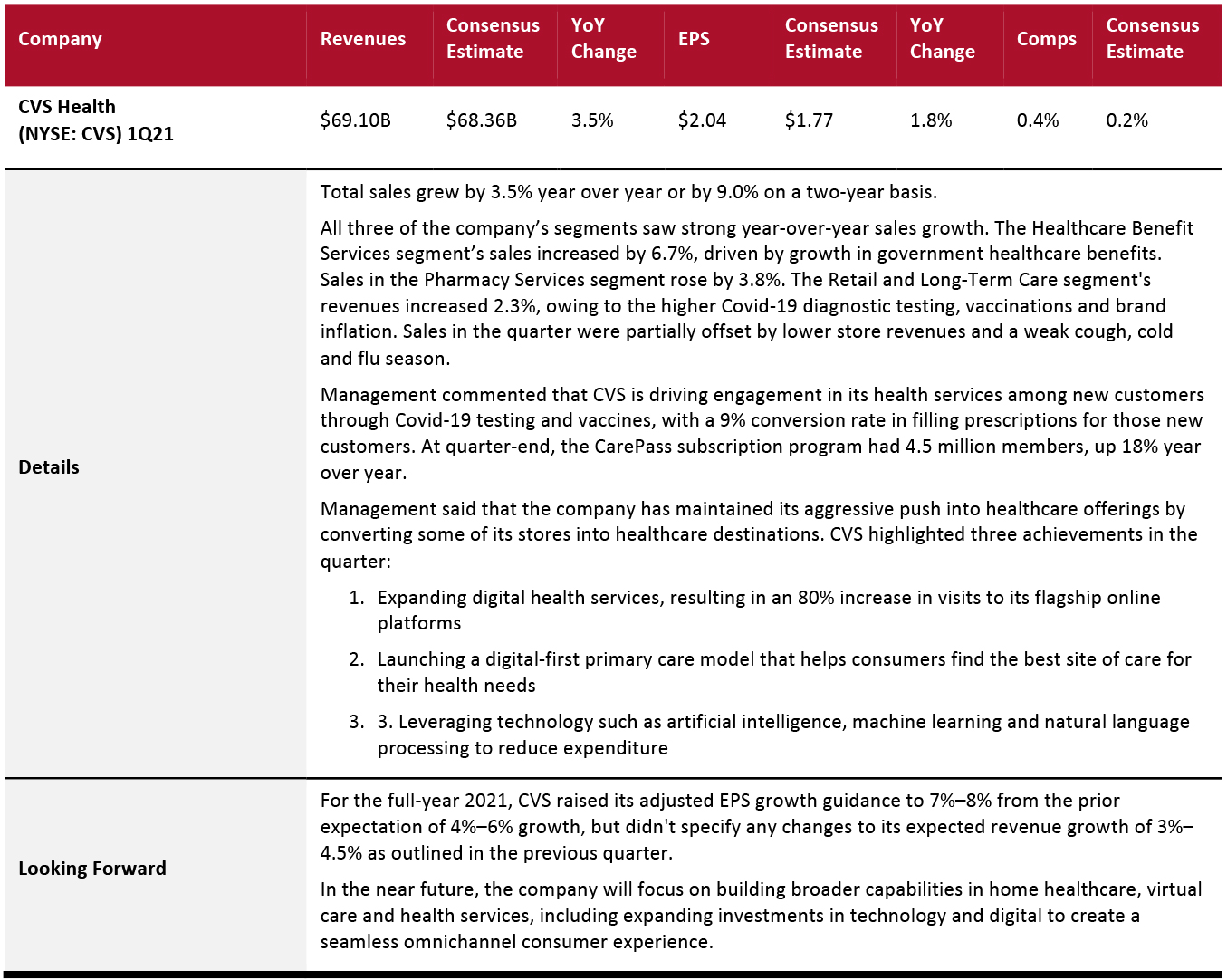
Food, Drug and Mass Retailers: Food and Grocery Retailers
In the quarter, Kroger reported double-digit sales growth on a two-year basis. Kroger is seeing continuation of several pandemic trends, including more premium product purchases, higher digital engagement across demographics and expanded consumption in key fresh areas like meat, produce and natural foods.
Grocery Outlet reported a strong quarter, with double-digit sales growth on a two-year basis. The company is continuing to expand its store estate.
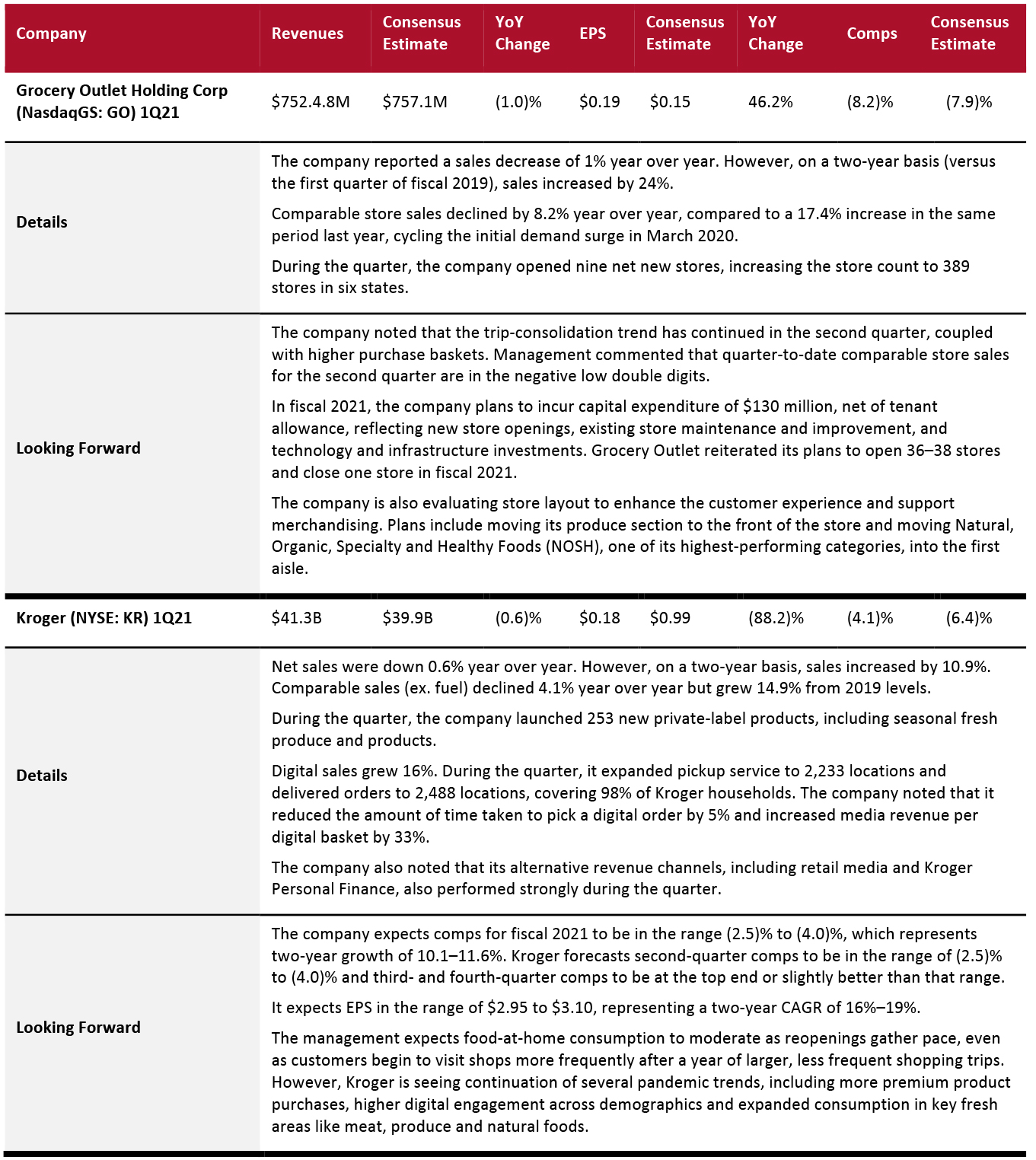
Food, Drug and Mass Retailers: Mass Merchandisers
Mass merchandisers sustained their growth momentum in the latest quarter. Target’s topline growth remained exceptionally strong with comp sales growth above 30% on a two-year basis. Target noted that apparel, beauty, essentials, food and home-goods categories are performing well.
Walmart reported another strong quarter, with double-digit sales growth on a two-year basis, driven by the growth in the apparel, hardlines, homes and seasonal categories.

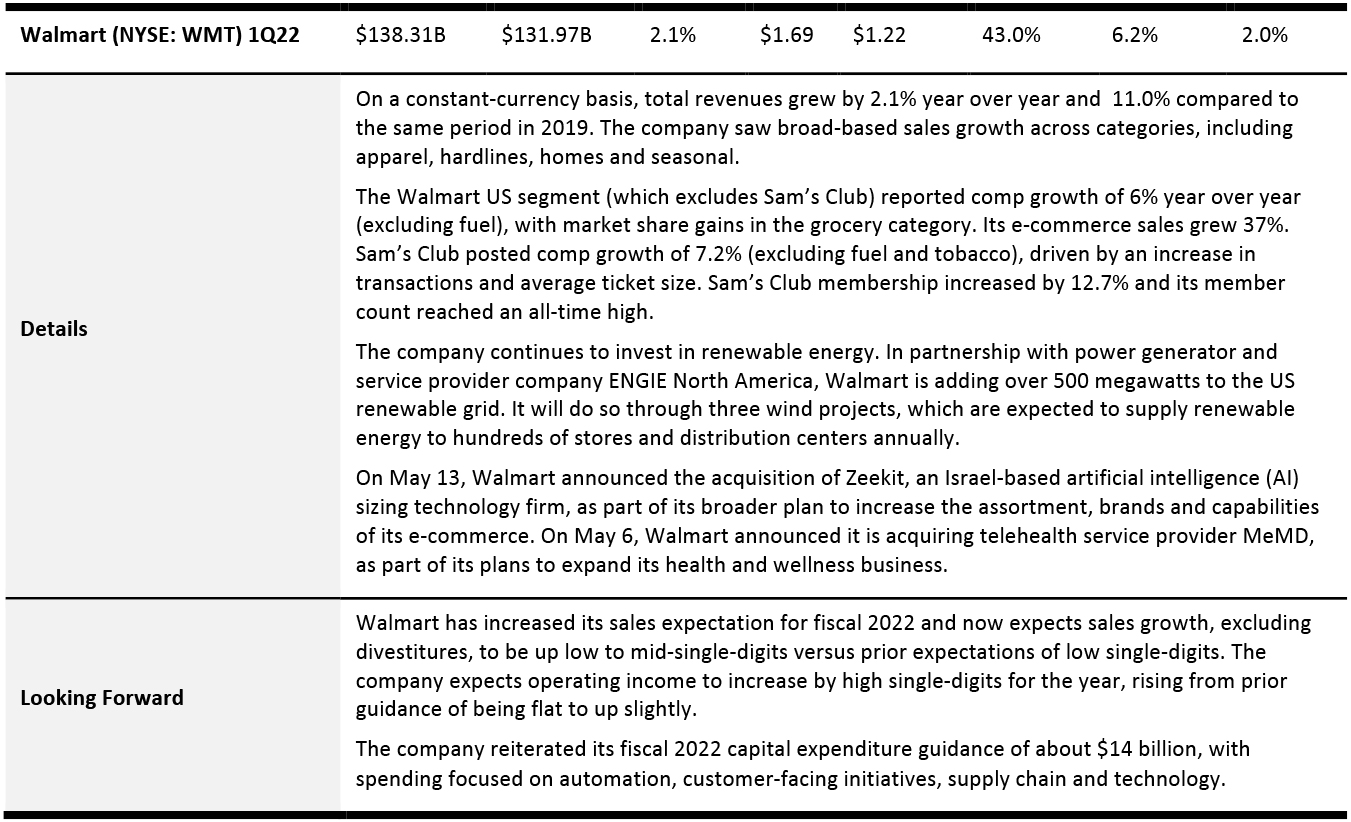
Food, Drug and Mass Retailers: Warehouse Clubs
Warehouse clubs continue to be a major beneficiary of the pandemic. Groceries, household goods, jewelry and sporting goods saw strong sales in the quarter.
Warehouse clubs are well-positioned for sustainable growth with new club openings, positive core member trends, new member opportunities and a growing e-commerce business.
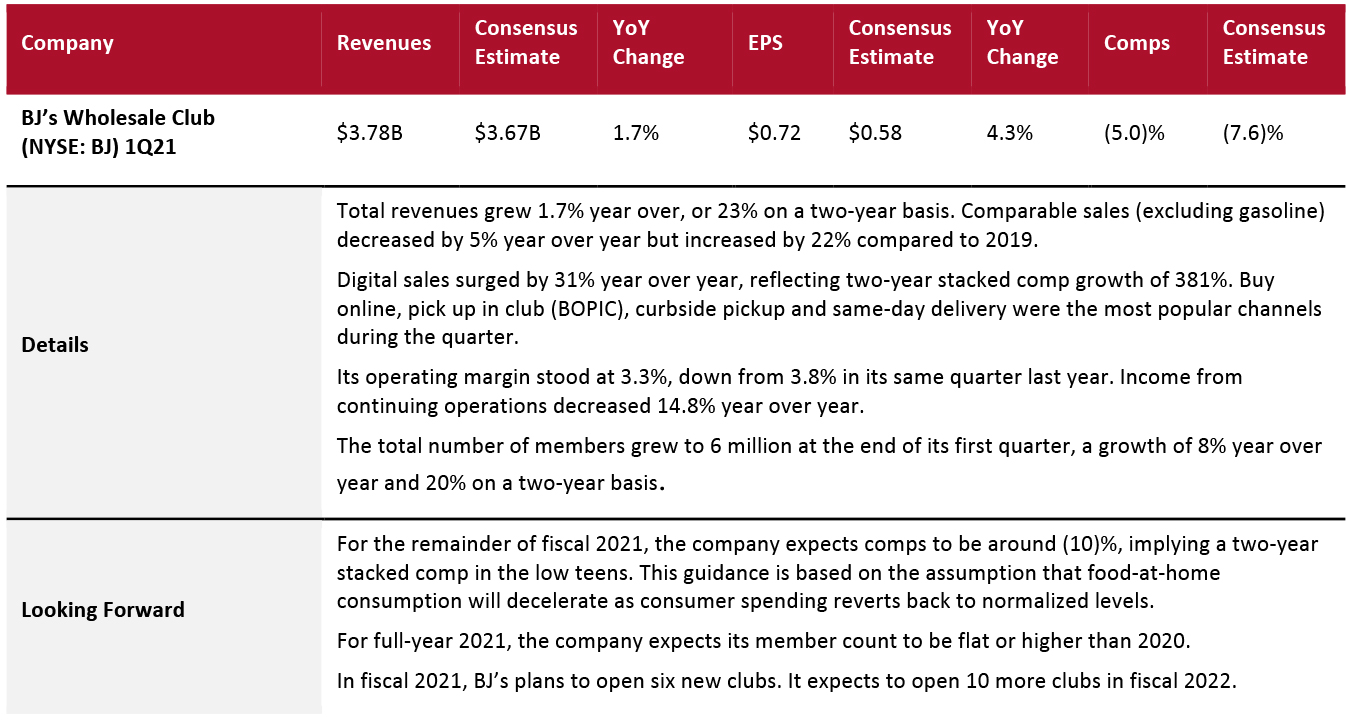
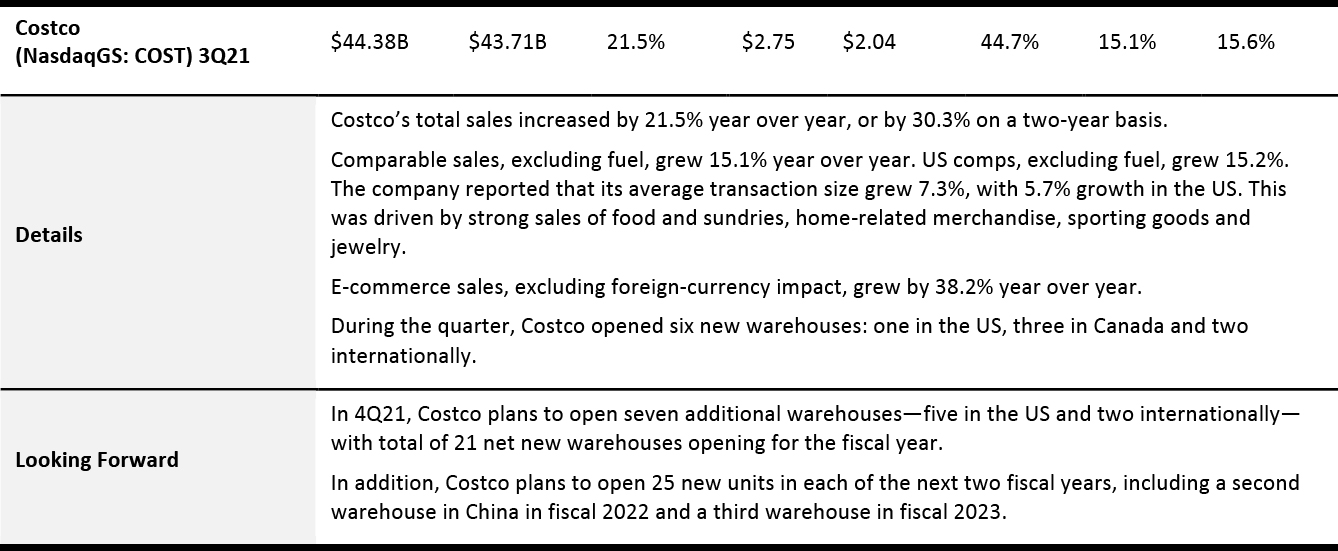
Home and Home-Improvement Retailers
Although
consumers are increasingly returning to public places and social activities, the latest quarter continued to see strong demand for home-related merchandise—all covered retailers reported double-digit sales growth on a two-year basis in the quarter.
Home-improvement retailers Home Depot and Lowe’s continued to see outsized demand from both Pro and DIY customers. Both Home Depot and Lowe’s pointed to inflation, including “unprecedented” inflation in lumber, as being a key reason for the increases in average ticket sizes.
Wayfair and Williams-Sonoma continued to capitalize on accelerated e-commerce adoption among consumers, with Wayfair reporting a profit for the fourth time since it went public in 2014.
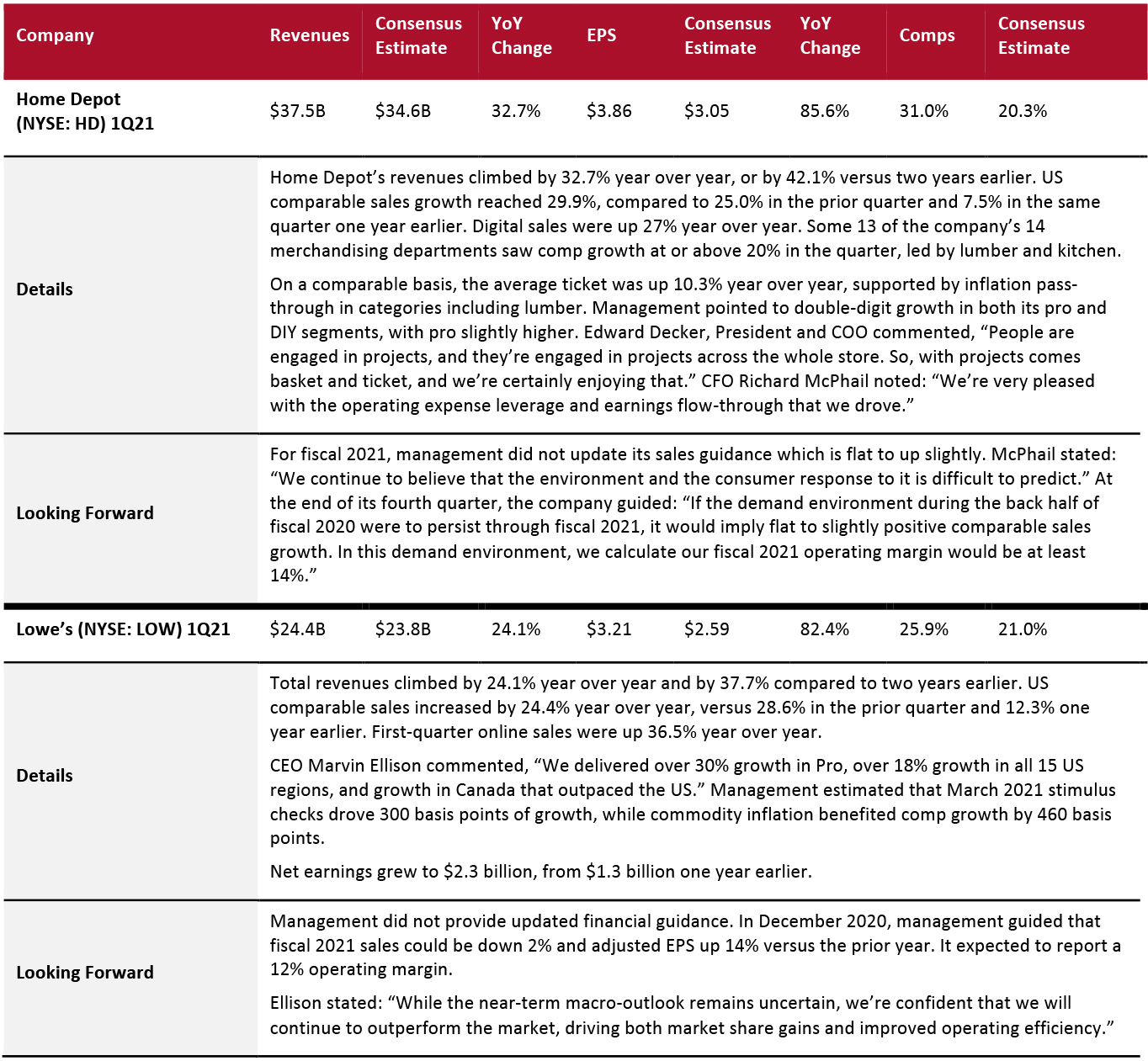
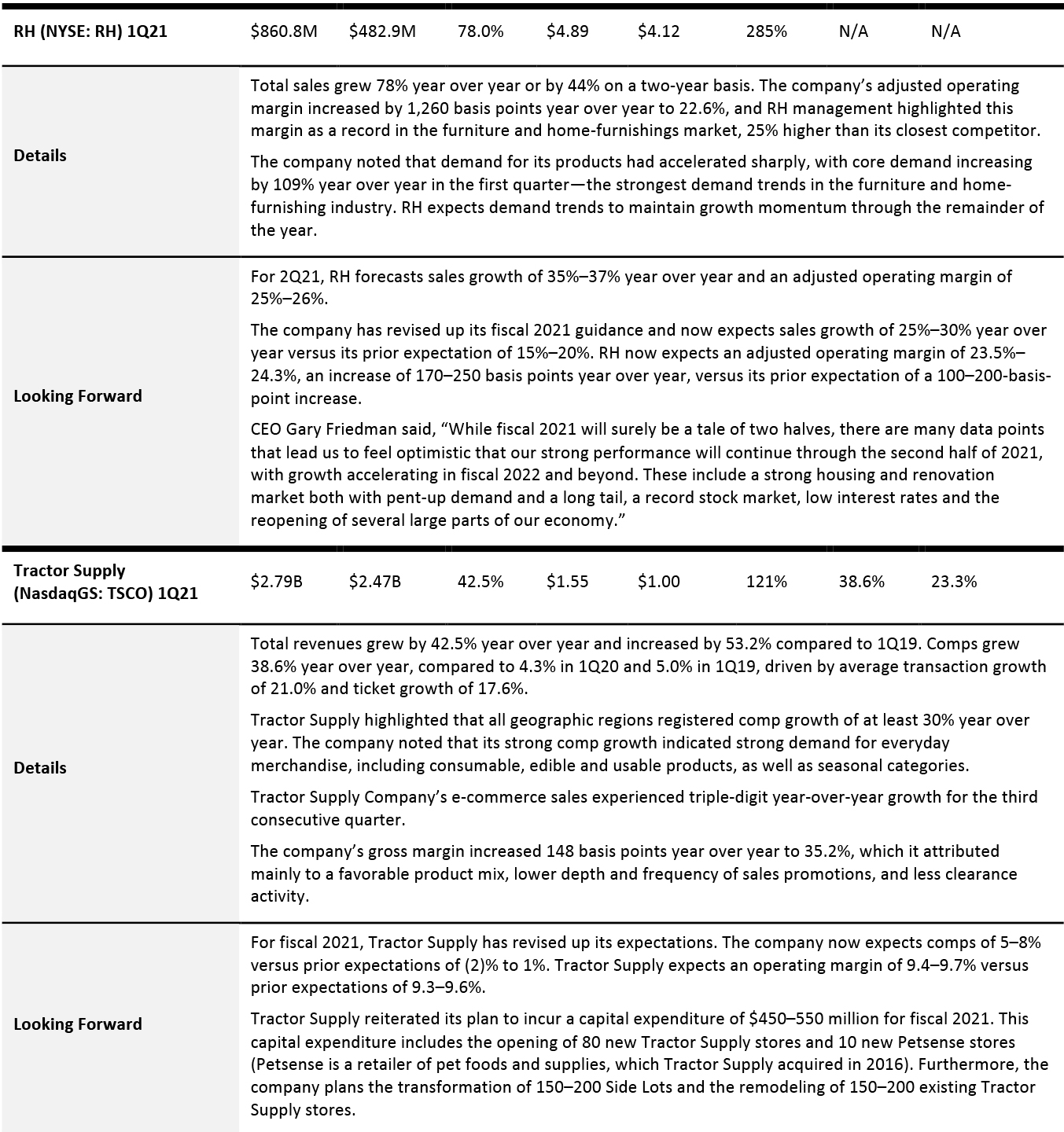
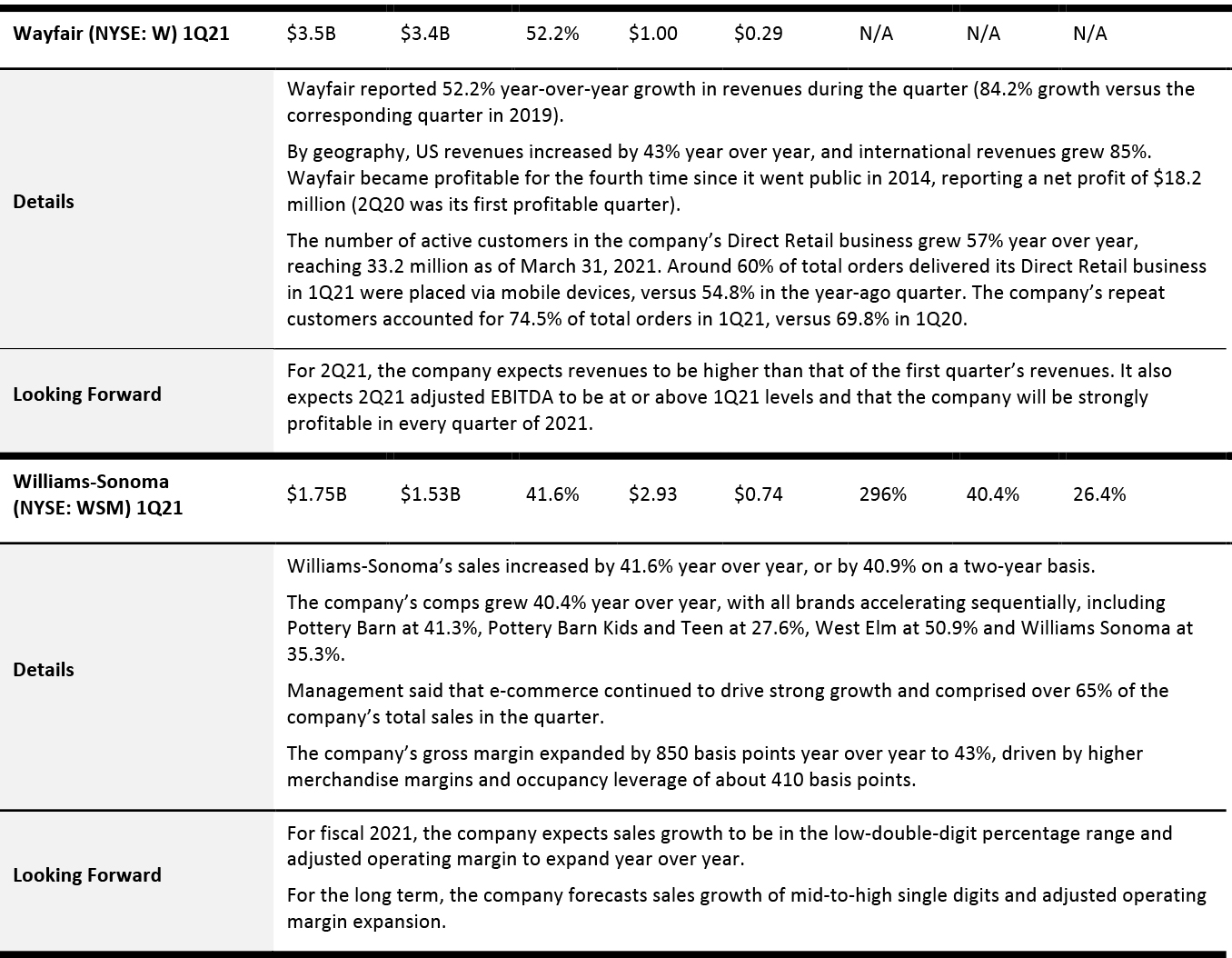
Luxury Companies
The luxury sector saw mixed results, despite the boost of easing pandemic-related travel restrictions. Canada Goose posted double-digit sales growth on a two-year basis, but Capri and Tapestry reported sales declines. These luxury companies expect robust sales growth in the remainder of the year. Asia—mainly China—continues to be the fastest growing region for all three covered luxury companies.
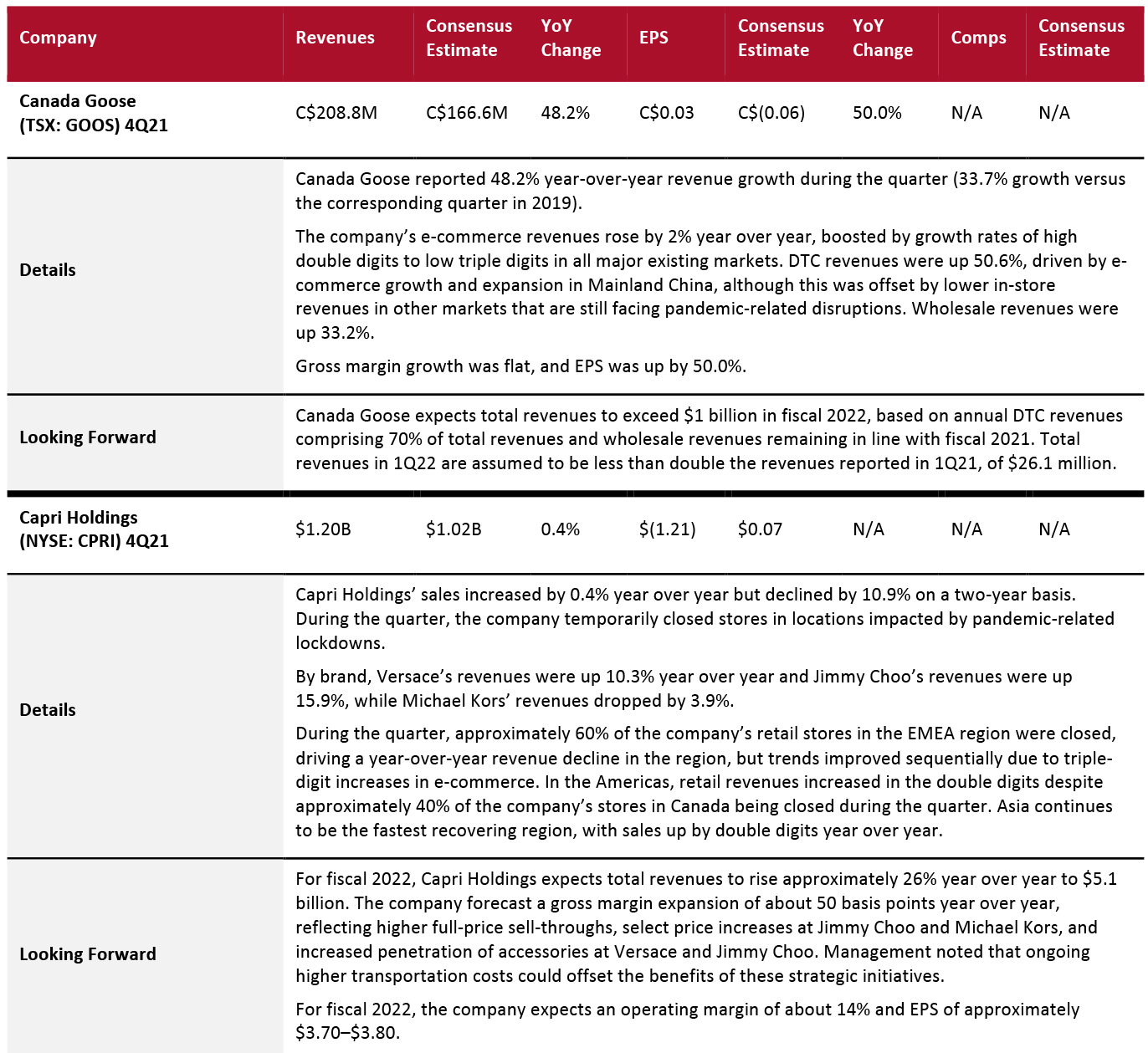
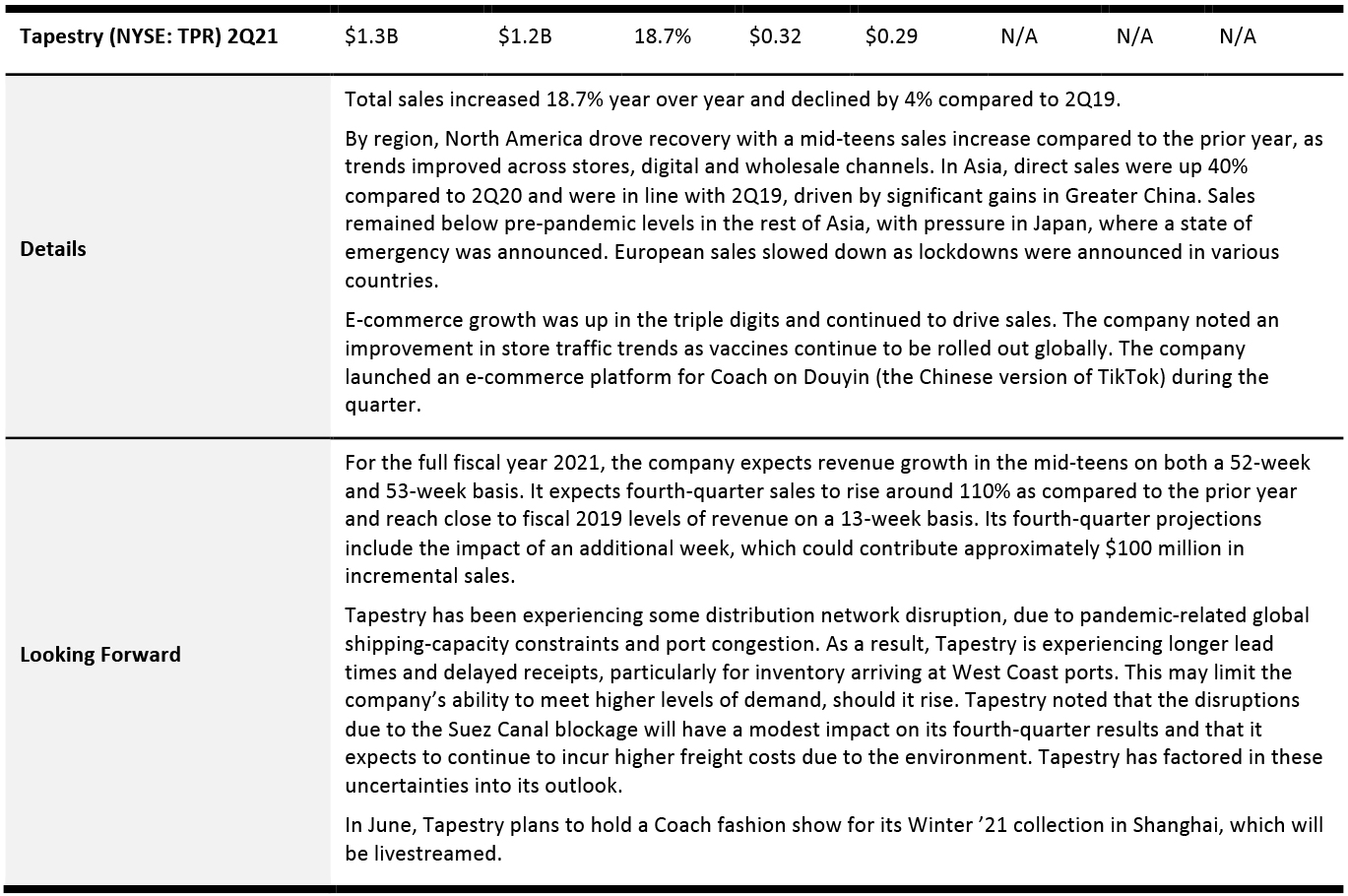
Luxury E-commerce
Luxury e-commerce platforms are witnessing a robust recovery. On a two-year basis (compared to the corresponding quarter in 2019), Farfetch posted triple-digit sales growth in its latest quarter and The RealReal reported double-digit sales growth.
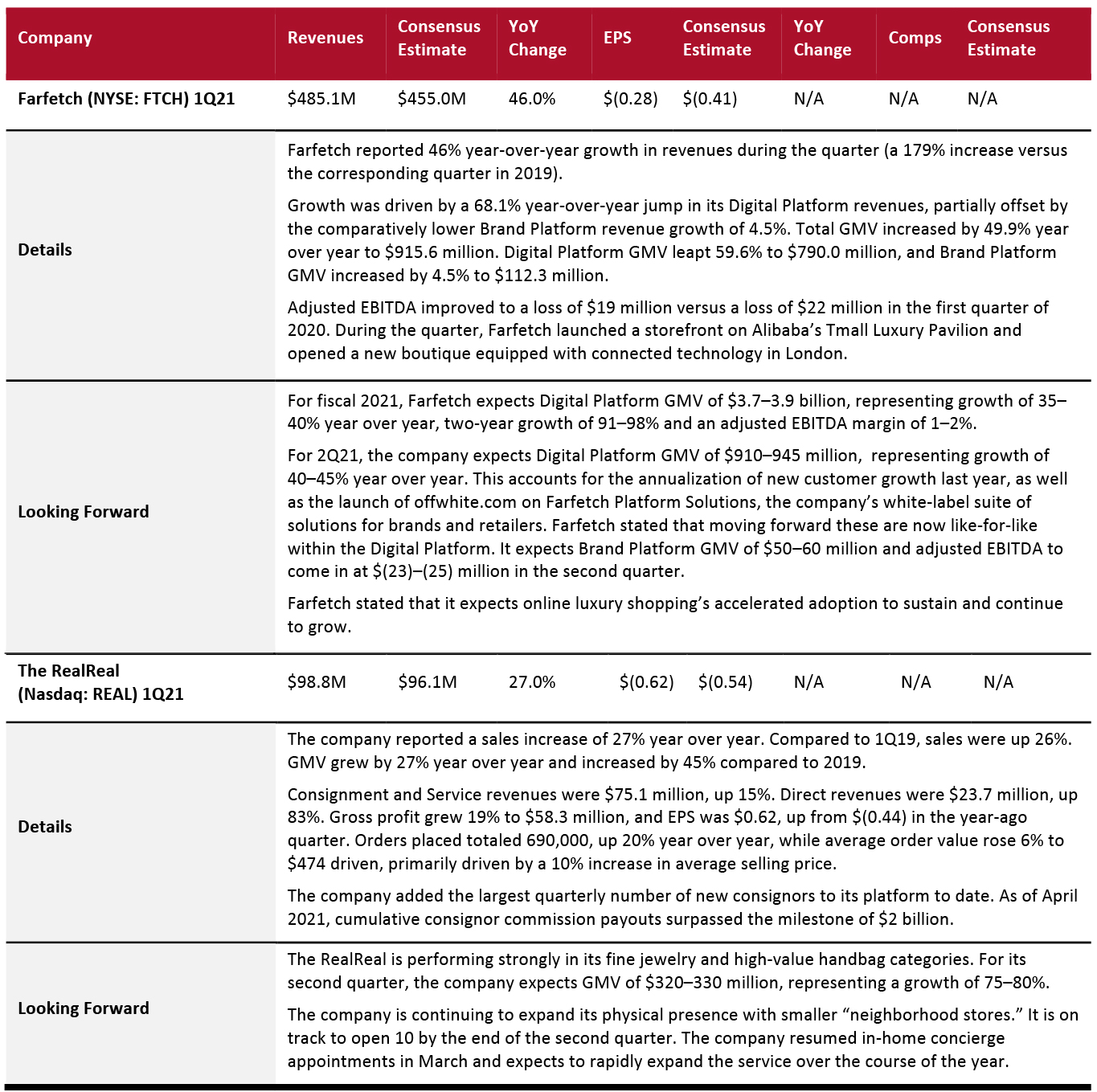
REITs
The sector continues to suffer amid the coronavirus crisis. All companies under our coverage reported a double-digit decline in revenues on a two-year basis.
However, most REITs remain optimistic about recovery in the rest of 2021. Simon Property Group noted that it is observing encouraging trends in sales, traffic and retail demand.
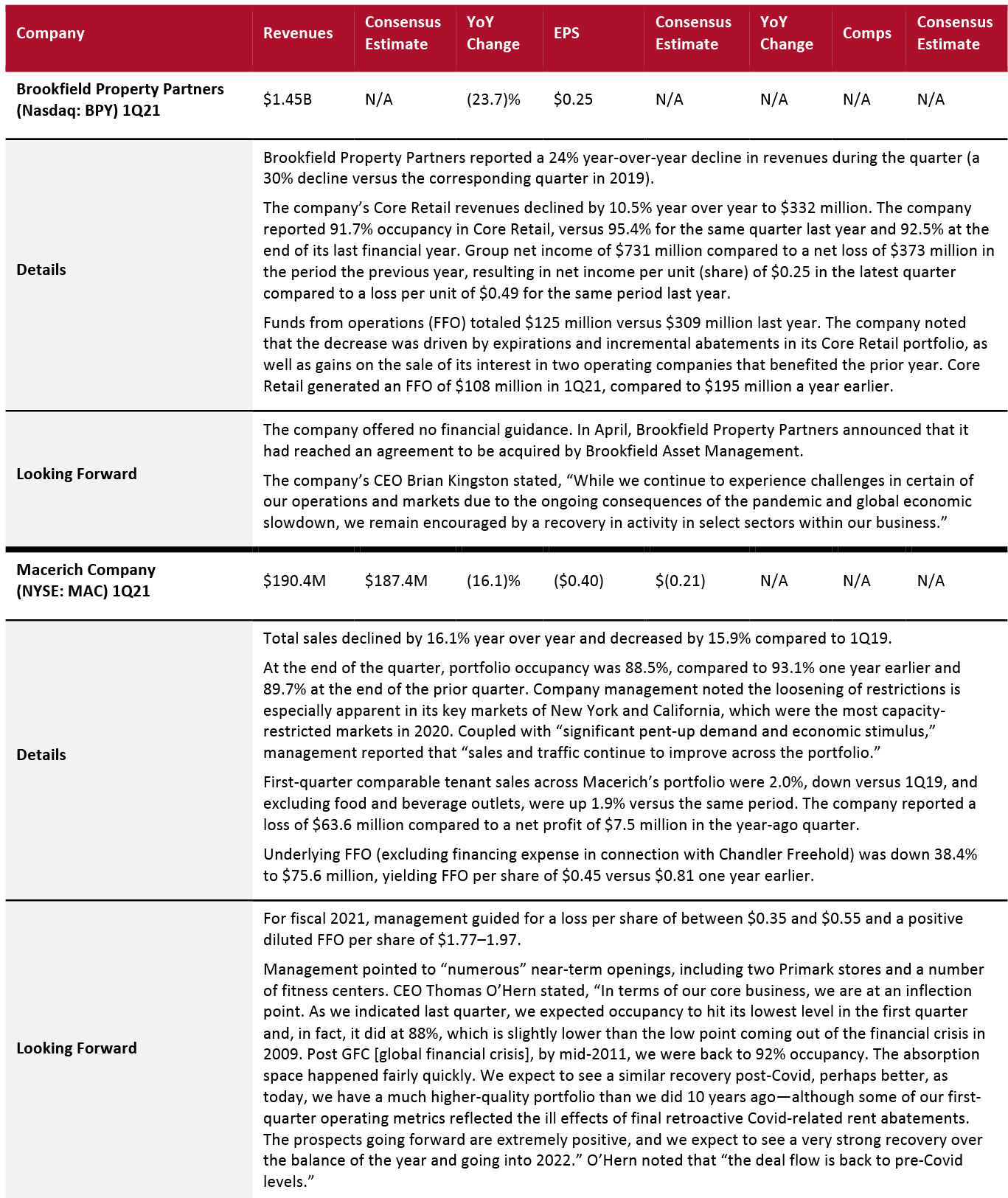
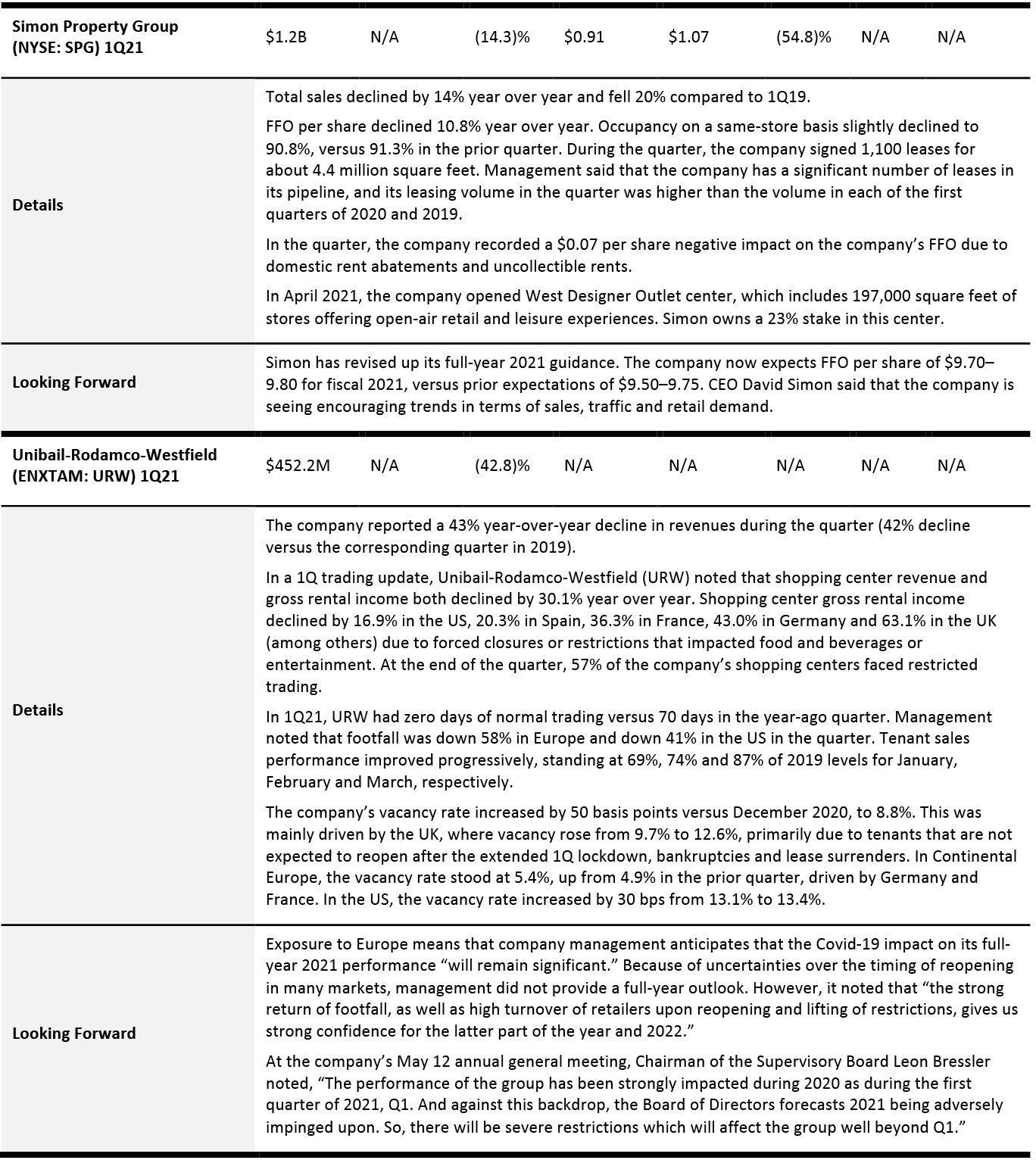
Looking Forward
Retailers and brand owners saw a strong first quarter. While consumers are increasingly returning to public places and social activities, the latest quarter continued to see strength in home-related merchandise: All covered home-improvement retailers reported double-digit sales growth on a two-year basis in the quarter.
Beauty retailers and brand owners continue to see a strong recovery. Within the beauty category, skin care, bath, fragrance and hair care are trending, while demand for makeup remains weak.
While apparel and footwear brand owners are posting mixed results, apparel specialty retailers reported a strong quarter, with all covered retailers posting strong positive sales growth on a two-year basis. While athleisure, casualwear and intimates remained strong catalysts for these retailers, they are also witnessing a rebound in demand for dresswear as consumers are returning to socializing.
Off-price retailers witnessed a strong quarter. While the home category remained strong catalyst for these retailers, they also are seeing robust trends in apparel categories, as consumers begin to resume social activities and refresh their wardrobes.
Department stores are witnessing a slower recovery than off-price retail, with Kohl’s, Macy’s and Nordstrom reporting mid-single-digit to double-digit sales declines on a two-year basis. However, these department stores see strong trends in various apparel and footwear categories, such as activewear, denim, dresses and shorts.
As pandemic-related travel restrictions eased, the luxury sector saw a mixed recovery, with some luxury retailers and particularly luxury e-commerce platforms posting strong sales growth on a two-year basis. We expect continued growth momentum in the next quarter with further easing of restrictions.
This quarter, we saw further evidence that the crisis will support, and likely accelerate, structural changes in US retail, such as store expansion among discount retailers—all discounters reported outstanding topline growth on a two-year basis. Like discounters, warehouse clubs continued to benefit from the crisis, with Costco and BJ’s reporting strong double-digit sales growth on a two-year basis as they continue to expand their store estates.
